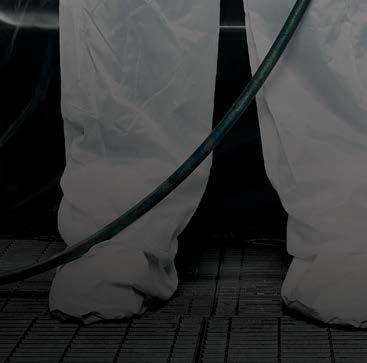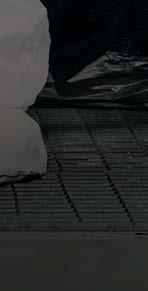




By Brian Bradley Autobody News
Optimizing sales results, maximizing lead conversion and driving sales leads are the three cornerstones that collision repair businesses should consider in their marketing strategy, Advanced Digital Media Services (ADMS) CEO Paul Donahue said during a webinar Jan. 15.
instance, repair shops have recently obtained the services of automation platforms to aggregate customers’ online reviews and expedite their responses, and are increasingly using artificial intelligence to streamline damage estimates and subrogation claim verifications.
Automation will likely be the biggest marketing-related driver of repair sales in 2025, and can
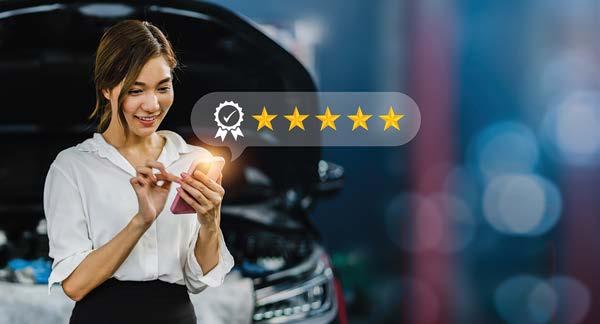
Those are the main pieces of an accelerated growth model that ADMS has constructed based on interactions with more than 250 repair shop owners over a 15-year period, that the company regularly advises its clients to follow.
Donahue’s input, provided during an Automotive Service Association (ASA) webinar, comes as the collision repair industry and automotive industry writ large are undergoing rapid technological transformation. For
help shops optimize their sales results, with local service ads (LSAs) providing the best return on investment (ROI), Donahue said. LSAs, which have only been launched in California and Florida so far, involve a tag designation of “Google Guaranteed” when a consumer searches for a particular type of business on a search engine.
“If we have anybody in here on this [webinar] that’s in Florida or
By Stacey Phillips Ronak Autobody News
In January, the Missouri Auto Body Association (MABA) announced a transition in leadership. After holding the association’s first election, Tanner Kemna, co-owner and operator of Kemna Collision Repair, Inc., was named president. Jared Nicholson, regional manager at Collision Leaders, became vice president.
Founding President Casey Lund stepped down to focus on expanding his MSO, Collision Leaders, with 10 locations in Missouri and Kansas.
“On behalf of the association, we want to express our gratitude to Casey,” said Gina Cotton, executive director of MABA. “Casey’s vision and dedication
were instrumental in the formation and growth of the association.”

A St. Paul, MN, auto repair shop that has served the local immigrant community for a decade was reduced to ashes in a fire authorities are now investigating as arson. The blaze, which broke out in the early hours of Jan. 11, destroyed SKD Auto Tek, a shop founded by brothers Soe Doh and his sibling.
The fire, which required 60 firefighters to contain, has left Doh devastated. “Too much, you know,” he told local news outlet KSTP. “It’s just heartbreaking for me because
this place is, like, I spend more time here than at my own home.”
Security footage reviewed by the shop’s owners captured two masked individuals arriving at the property around 3:10 a.m., one carrying a red container. A minute later, the suspects were seen leaving without it.
“They came in with a gas can; they got out with no gas can,” Doh noted. “We saw that and said, oh man, somebody did this to us.”
By Stacey Phillips Ronak Autobody News
During the CES show in January, more than 141,000 attendees had an opportunity to discover global innovations in technology. This year, there were more than 4,500 exhibitors at the Las Vegas, NV, event. Highlights included all facets of future mobility, such as smart transportation, electric vehicles (EVs) and charging options, software-defined and autonomous vehicle technology and artificial intelligence (AI).
“CES is where innovation comes to life,” said Gary Shapiro, CEO and vice chair of the Consumer Technology Association (CTA)®, the owner and producer of CES.
“From groundbreaking innovations that improve lives to transformative ideas that redefine industries, CES is a celebration of the art of the possible, showcasing how technology enriches our world and inspires a brighter future for all,” added Kinsey Fabrizio, president of CTA.
Several OEMs made announcements and presented during the show. Martin Lundstedt, Volvo’s president and CEO, discussed the company’s commitment to achieving net-zero carbon emissions by 2040 and the importance of strategic partnerships and systemic collaboration.
BMW shared insights on the company’s upcoming product launches, Panoramic iDrive, and partnerships.
Sony Honda Mobility unveiled the AFEELA 1. The company will begin accepting orders for the EV this year.
Chinese automaker Geely unveiled its “Full-Domain AI for Smart Vehicles” technology system. The AI developments built on this system include an end-to-end large voice model, AI digital chassis, smart cockpit and intelligent driving technology.
Tekedra Mawakana, co-CEO of Waymo, spoke with Bloomberg Technology’s Ed Ludlow about the company’s progress in developing its self-driving technology, Waymo Driver. Mawakana talked about safety and the expansion of its autonomous ride-hailing service. The company also showcased advancements in technology.
Autobody News reached out to some of the CES exhibitors to learn what they showcased during the show and future trends.
Blink Charging displayed three EV charging stations: Series 7 ISO, Series 9 and the EQ 200.
The company offers Level 2 chargers, which are known to be less expensive
and easier to install, and DC chargers, which charge more quickly.
“With 90% of EV chargers being Level 2, they stand as the optimal choice for reliable, day-to-day charging,” explained Mike Battaglia, Blink’s president and CEO. “For EV drivers who don’t live in a single-family home, L2 chargers have become increasingly popular, especially at multi-unit properties and public spaces such as parks, shopping centers and parking facilities.”
and technology company, unveiled the HERE AI Assistant. The AI-powered intelligent guidance assistant leverages multiple Generative AI Large Language Models (LLMs) to deliver natural language-powered, location-aware guidance for softwaredefined vehicles and transportation companies.
“By integrating advanced natural language AI with HERE’s industryleading mapping and location technology, the HERE AI Assistant

Level 2 chargers facilitate charging battery electric vehicles (BEVs) to 80% in four to 10 hours and plug-in hybrid electric vehicles (PHEVs) in one to two hours.
According to McKinsey & Company, by 2030, the U.S. is projected to have more than 28 million chargers, up from just over 4 million today.
“Globally, the market is expected to grow at about 25% compound annual growth rate (CAGR) through 2030, requiring an investment of around $260 billion,” noted Battaglia.
Blink’s mission is to drive the energy transition forward through innovation in EV charging solutions and constant enhancements to the EV driver experience. Battaglia said the company is an advocate for incentives that foster private-sector participation in the growing domestic EV industry.
“The transition to EVs must benefit the environment as well as the economy,” he shared. “We will continue to advocate for policies that advance this vision — policies that align with our goals of fostering innovation, reducing emissions, boosting energy independence, and creating high-quality jobs in the U.S.”
support Advanced Drive Assistance Systems (ADAS) and Intelligent Speed Assistance (ISA), offering real-time alerts, in natural language, about speed limits and dangerous conditions to improve driver awareness and safety.
The HERE AI Assistant also enables users to contribute to the HERE map to ensure it remains current. For example, users can report temporary speed limit information or events such as closed roads and construction zones.
iNAGO showcased the company’s key products for the automotive industry, including the netpeople assistant platform 2.0, the netpeople automotive assistant and MUTUALISM.
netpeople assistant platform 2.0 is a conversational assistant platform based on natural language interaction and generative AI. Ron DiCarlantonio, founder and president of iNAGO Inc.,explained it is highly accurate compared to generic models and provides companies with full control over their content, data and experience.
transforms how users interact with vehicle navigation systems,” said Denise Doyle, chief product officer of HERE Technologies. “This solution delivers personalized, realtime insights, enabling smarter route planning, enhanced safety features and seamless adaptability to changing conditions.”
Doyle said the AI-powered capabilities are tailored for the automotive industry as it builds software-defined, connected, electric and automated vehicle systems. HERE AI Assistant will also be available for logistics and fleet managers to enhance driver safety, route optimization and improved estimated time of arrival (ETA) calculations.
HERE AI Assistant can personalize travel plans based on requests, driving habits, preferencdnes and real-time conditions. For example, a family can request landmarks during a road trip while including customized stops at rest areas, gas stations and restaurants. Other key features include solving complex travel requests and delivering intelligent EV routing to find charging locations.
Upcoming versions of the HERE AI Assistant are expected to integrate topology and topography map layers to enhance vehicle safety systems.
By providing precise map data, Doyle said these systems can
netpeople Automotive Assistant combines owner’s manual information with feature control, deep controller area network (CAN) data integration, personalization and third-party integration, which DiCarlantonio said allows OEMs to deliver accurate and superior user experiences.
MUTUALISM is an intelligent cockpit platform based on open standards that allows technology companies to work together to create the next-generation cockpit for the automotive and mobility industries.
“iNAGO provides a driving experience that is simple, smart, safe and fun,” explained DiCarlantonio. “We do this by providing vehicles with an intelligent assistant that is deeply integrated into the car to provide drivers and passengers a natural experience.”
He compared the intelligent assistants to a version of ChatGPT that is integrated into the vehicle to provide personalized support and services.
“Our goal is to allow these automotive intelligent assistants to bridge the gap between consumers, OEMs and repair professionals,” explained DiCarlantonio. “The assistants can help users through a collision and guide them through the process of emergency services and repair.”
Indy Autonomous Challenge
One of the highlights during CES was a multi-car autonomous race
Mike Anderson’s First Live Podcast Explores Impact of Rhode Island’s
Abby Andrews
Single Store Generalist Collision Repair Shops are Going Extinct – But That Could Be a Good Thing 32
Abby Andrews
Boost Repair Revenues Through Sales Strategy
1
Brian Bradley
Trump’s Flurry of Executive Orders Draws Mixed Opinions from Aftermarket Industry 8
Brian Bradley
Collision Repair Operators Share Plans for 2025 to Go Deep on Key Goals ��� 12 Paul Hughes
Collision Shop Owner Turns Former Jiffy Lube into ‘Concierge Center,’ Seeks More 10 Paul Hughes
Some Auto Body Shop Owners Seek Scaling Back Over Outright Salep ���� 22 Paul Hughes
Tim Allen’s New TV Show ‘Shifting Gears’ Built Around California Custom Shop������������������������������������������������ 34
Paul Hughes
Automechanika Features Global Vehicle Tech Innovations Headed for U�S� Market ������������������������������������� 24
Stacey Phillips Ronak
CES 2025 Provides Look at Future Automotive Trends in Technology 2
Stacey Phillips Ronak
CAPA Explains How Tier 1 Verification Compares to Its Other Non-OEM Part Certifications������������������������������������� 6
John Yoswick
CIC Highlights Changes to Estimating Guide for CCC System 14
John Yoswick
OEM Certification Programs Introduce Tiers for Fleet, Electric Vehicles 16
John Yoswick
New Missouri Auto Body Association Leaders Share Vision 1
Stacey Phillips Ronak
Fire Causes $1.25M in Damage to Omaha Auto Parts Shop 23
Integrity Automotive in Ohio Expands with Second Location 10 Minnesota Auto Shop Destroyed in Suspected Arson, Community Rallies to Rebuild 1
Become One of Your Parts Vendors’ Best Customers by Understanding Their Perspective 7
Mike Anderson












coordinated by the Indy Autonomous Challenge (IAC), a nonprofit organization based in Indianapolis, IN. Dedicated to advancing autonomous technologies through high-speed racing, IAC organizes competitions among university-affiliated teams worldwide, challenging them to program AI drivers to pilot fully autonomous racecars.
Paul Mitchell, president and CEO of IAC, said the event marked a major milestone in the evolution of physical AI and autonomous racing. Four IAC AV-24 fully autonomous racecars, piloted by AI drivers from top global university teams, competed in a 20lap race.
It ended in a side-by-side finish, with UNIMORE Racing crossing the finish line less than three-tenths of a second faster than Cavalier Autonomous Racing.
“Since our first race in 2021, the IAC and our university teams have been making history with the world’s fastest autonomous racecars, from setting speed records to introducing the world to head-to-head autonomous racing,” said Mitchell. “But our goal has always been multi-agent racing, so being the first to have all our AI drivers complete a race and do so with five overtakes, no accidents and a nose-to-nose finish is a testament to the progress of the IAC’s global ecosystem of highly talented university researchers, industry partners and government supporters.”
IAC also announced Aidoptation, a commercial spinout headquartered in Belgium, focused on leveraging the IAC’s work in high-speed mobility and autonomous systems. Mitchell said the venture is poised to bridge the gap between the IAC’s advancements on the racetrack and their applications in industries like autonomous vehicles, robotics and high-speed mobility.
At the show, IAC displayed the IAC AV-24, which it describes as the world’s fastest autonomous racecar. In addition, the organization hosted conference sessions, including How to Build Physical AI for Mobility and Physical AI: Moving from Bits to Atoms. Mitchell said the sessions provided insights into the future of physical AI, underscoring the potential of this technology.
Oshkosh Corporation, making its debut at CES, showcased technology for “everyday heroes,” such as firefighters, soldiers, postal carriers, construction and airport tarmac workers, and the communities they serve.
The company’s products included an all-electric refuse and recycling front-loader vehicle, an autonomous robot designed for on-demand refuse collection to help manage weekly chores, and an AI-enabled Collision
Avoidance Mitigation System (CAMS) for fire and emergency vehicles to provide critical advance notice of an impending collision to first responders. The company also offers self-driving vehicles and connected solutions like iOPS® and ClearSky Smart Fleet™ technologies to improve operations at airports and job sites.
“Technology is only as valuable as the positive impact it has on our lives and within our communities,” said John Pfeifer, president and CEO of Oshkosh Corporation. “Oshkosh works closely with customers to design and develop solutions for difficult and challenging jobs -- from protecting firefighters to reducing pollution to keeping workers safe at heights and even more routine tasks such as performing weekly chores.”
He said the company’s innovations use AI, autonomy, connectivity and electrification to support a safe, productive, quiet and clean future.
RTI showcased its product for autonomous vehicles, RTI Connext Drive. Connext Drive is a connectivity framework for software-defined vehicles (SDVs) that enables data sharing across complex systems. Thomas Bloor, director of automotive business, said it is used by more than 25 OEMs.
“The automotive industry stands at a pivotal moment, facing the dual challenges of a software-defined future shaped by surging technology complexity and the transition to a central computer model,” explained Bloor. “RTI Connext Drive simplifies, scales and streamlines development for SDVs as it integrates complex software modules into new zonal and central computer hardware for seamless data sharing across systems.”
Bloor said OEMs and Tier 1 suppliers face several challenges in transitioning to software-defined vehicles, including complex software integration, scalability demands and heightened cybersecurity risks.
“Managing diverse software components and ensuring real-time performance require adopting standardsbased frameworks like Connext Drive to streamline communication and enable reliable, scalable architectures,” noted Bloor. “The shift also accelerates innovation cycles, requiring agile development practices and modular platforms to deliver updates and new features quickly.”
Integrating modern software with legacy systems and addressing resource constraints further complicates the transition, according to Bloor, but middleware solutions and strategic partnerships can help bridge the gap.
“By leveraging proven technologies and industry expertise, OEMs and
suppliers can overcome these challenges and thrive in the evolving automotive landscape,” Bloor added.
He said that collaboration among OEMs, Tier 1 suppliers and technology providers is essential for developing shared frameworks, tools and best practices that reduce fragmentation and accelerate innovation.
“Consistent safety certifications, robust cybersecurity standards and regulatory alignment across regions can help the industry build a cohesive foundation for advancing softwaredefined and autonomous vehicles, driving innovation while ensuring reliability, safety and compatibility,” said Bloor.
This is the third year Sheeva.AI has attended CES. The company provides vehicle location-based services and has developed an in-car payments and commerce platform called SheevaConnect™
Evgeny Klochikhin, founder and CEO of Sheeva.AI, said SheevaConnect™ can identify and activate the charger and initiate a charging session by touching the car screen, using the company’s patented precise location technology and cloud-based platform.
Two beneficiaries of the SheevaConnect™ platform, according to Klochikhin, are car dealers and repair shops.
“Because our technology is integrated inside the car, we can help drivers get to the nearest dealership or repair center when they have a problem without seeking alternatives,” he explained.
Direct integration with the appointments API allows users to schedule a visit inside the car and automatic payments via Sheeva’s embedded digital wallet facilitate the transaction and driver experience at the repair shop or dealership after the service is completed.
Sheeva.AI made two announcements during CES.
The first is the company’s partnership with the global automotive supplier AISIN Corp. to provide customers of their LocationBased Services platform (LBS-SDK) with payments and services within their In-Vehicle Infotainment (IVI) systems.
The in-vehicle navigation platform allows drivers to activate and pay for many goods and services, such as gas, parking and EV charging, by tapping their vehicle’s screen.
The company is in production with Stellantis, and the goal is for the SheevaConnect™ platform to be included in a million cars by the end of 2025.
Sheeva.AI also announced its
partnership with EV Connect, allowing EV drivers to activate and pay for charging sessions at more than 50,000 chargers across North America.
Klochikhin said EV charging is a challenge to the broader adoption of EVs and the automotive industry is seeking solutions to facilitate the charging process and make it faster and smoother. “Sheeva’s partnership with EV Connect can already deliver the same seamless experience today,” he said.
VinAI, a company that offers smart mobility solutions for the automotive industry, demonstrated various AI technologies. These included DrunkSense, MirrorSense and Touch2Park. DrunkSense is a drunk driving detection system that doesn’t require a breathalyzer, achieving 85% sensitivity, eight percentage points higher than the industry standard. MirrorSense, a CES 2024 Innovation Award Honoree, adjusts the mirrors with 10mm accuracy based on the driver’s position. Touch2Park, a recipient of the 2024 AutoTech Breakthrough Award, is a Level 2 smart parking solution.
The company also showcased its Driver Monitoring System (DMS), an advanced 360° Surround View Monitoring System, and Jelly View, a 3D transparent mode offering comprehensive exterior and undercarriage visibility.
“VinAI’s AI solutions are developed with a focus on optimizing performance on systems with limited resources,” said Vuong Cap, director of VinAI’s Smart Mobility Division. “This enables automotive manufacturers to integrate advanced technologies without requiring hardware upgrades, reducing costs and enhancing competitiveness.”
Cap said this flexible approach not only broadens the applicability of AI but also meets the growing demand for smart and safe vehicles from automakers worldwide.
VinAI said automotive manufacturers in the U.S. are under increasing pressure to enhance the safety, comfort and intelligence of their vehicles; however, providing cuttingedge AI features while maintaining competitive costs and production timelines poses a significant challenge for many OEMs.
The company is addressing these challenges with AI solutions designed to deliver safer and more comfortable driving experiences without demanding excessive resources from OEMs. Technologies and features developed by VinAI have been integrated into numerous vehicle
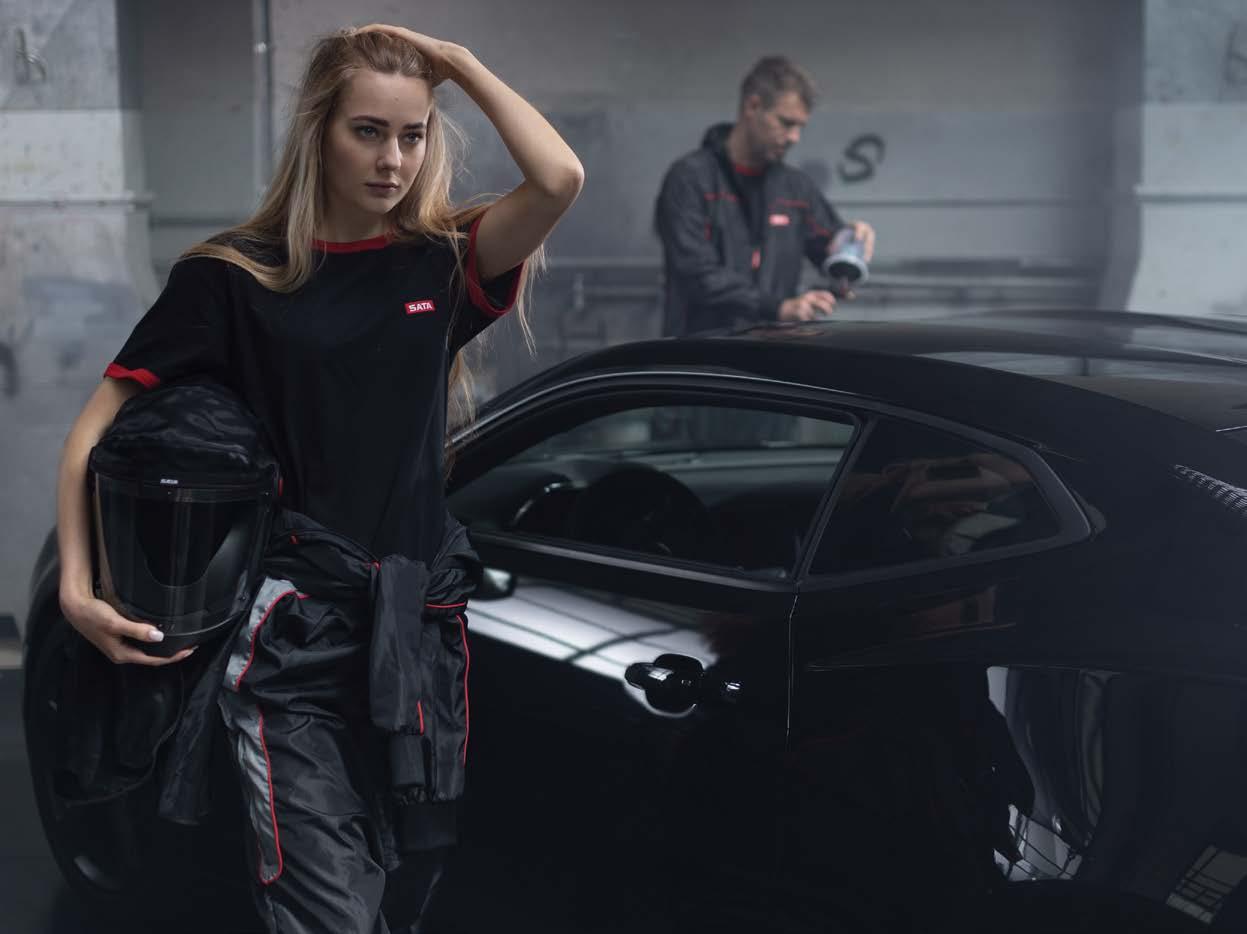
The new jet X.
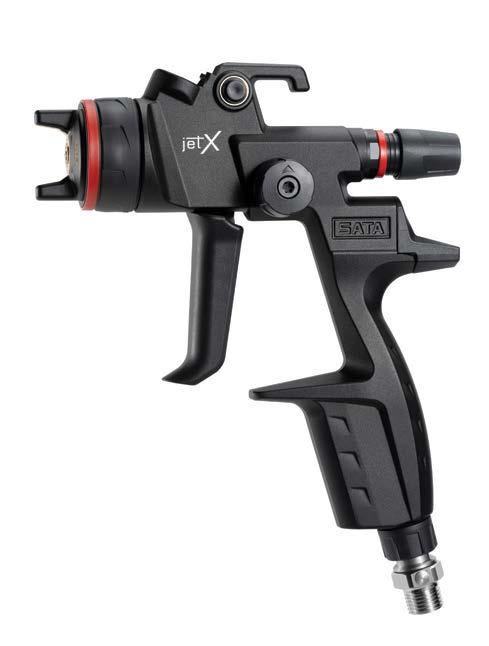
It comes with a completely new nozzle concept. Features a basic or digital options with an unprecedented range of functions. Packed with features that make the difference. We did this for one reason alone: to make it easier for you to be better. jet X. Works for you.


By John Yoswick Autobody News
When the Certified Automotive Parts Association (CAPA) announced in 2021 the launch of a Tier 1 Replacement Parts Verification Program, concerns were raised about possibly creating confusion in the industry by adding yet another term to the list of parts nomenclature.
At the Collision Industry Conference (CIC) during SEMA week, a poll taken just prior to a CAPA presentation on the verification program found that more than two years after the first “Tier 1” parts were labeled as such by CAPA, 2 in 5 attendees acknowledged they were unclear what a Tier 1 part is.
The Tier 1 program differs from CAPA’s certification program for nonOEM parts. Those parts are often manufactured by a company that isn’t producing the same part for an auto manufacturer, and go through CAPA’s full testing program to physically check the fit, finish, paint adhesion, coating performance, weld integrity, etc.
In the CIC presentation, Stacy Bartnik of Intertek — the company that conducts CAPA’s testing and
certification of non-OEM parts — said the Tier 1 verification program is for parts produced by a Tier 1 supplier of OEM parts to the automakers, such as Bosch or Hella, but sold under different branding with no other changes from the corresponding part made by that company for an automaker. Such parts don’t go through CAPA’s testing.
no [OEM] branding, no [OEM] logos, and it’ll be in the packaging of that Tier 1 manufacturer.”
She said one of the reasons the program was launched was because of industry confusion over what an “opt-OE” part is, with Tier 1 suppliers wanting to somehow differentiate their parts from the different types of parts included in that designation. Most of the parts that have received the verification to date are headlamps and sensors.
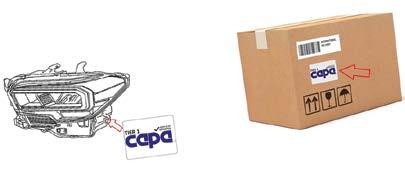
“What we’re doing is we are taking an OE service part that a Tier 1 manufacturer makes, [and] verifying that that part, which is also being sold under the Tier 1’s own brand, is made in the same facility, with the same material, all the process is the same, the documentation is the same,” Bartnik said. “The only allowable difference is branding. So there will be
Tier 1 verified parts receive a blue seal — as opposed to the yellow CAPA seal on certified non-OEM parts— and are listed on the CAPA website. They also are designated in the estimating systems using such codes as “CAPA Tier 1” in Mitchell, or “A/M: TIER 1” in the CCC Intelligent Solutions system.
Bartnik said the program has been a good partnership between CAPA and Tier 1 automaker parts suppliers to give the industry more choices of alternative parts.
“There’s a time and a place for all the

different part types that are available out there, and we want to make sure when someone’s using [alternative parts], that they are getting a safe, quality repair,” Bartnik said. “And that’s the whole goal is to give the industry options that are going to put that car back to being a safe vehicle to drive.”
Dave Mollner of Hella, one of the Tier 1 suppliers selling verified parts under the CAPA program, was asked what happens if there is a recall related to one of those parts.
“We have a complete compliance team that understands where those parts are sold, what distributors, and then that’s a process they handle,” Moller said.
This also distinguishes the Tier 1 verification program from CAPA’s certification program for non-OEM parts made by a company that isn’t supplying the same parts to the automaker. If CAPA issues a public safety notice about one of its certified non-OEM parts, shops that installed one of those parts will be contacted by CAPA directly only if the shop entered the CAPA seal number from the part into the CAPA Tracker online system when the part was installed.
CARSTAR has been a game-changer for my business. It’s not just about improving my shop; it’s about being part of something bigger—contributing to the collective success of our community. Through CARSTAR’s resources and ongoing training, I’m constantly learning new techniques and staying ahead of industry trends. This commitment to learning allows me to continually refine our processes and set a standard for excellence that elevates my team and our customers.”
-
Miguel Espana,
Owner of CARSTAR Espana’s San Jose, 2024 Franchisee Engagement Award Winner

Mike Anderson
In a previous column, I wrote about what shops are looking for from the wholesale parts vendors they work with. But through more than a dozen meetings I’ve conducted for an automaker, bringing together that OEM and its wholesale parts managers in a region along with collision repairers, I’ve also heard from those parts managers what shops do — or don’t do — that makes them the best customers those dealers have.
Why should shops care about this? Because just as you, as a collision repairer, will go above and beyond for your best customers, wholesale parts vendors will go above and beyond for their best shop customers.
Here’s what’s on their list: They want to work with shops that submit accurate orders. Shops that order what they THINK they need and then return half are not ever going to be among a parts vendor’s best customers. Accurate parts orders, many vendors say, convey the position on the car for the needed parts: left/right, front/rear.
Order accuracy goes hand in hand with complete parts orders. Avoid having multiple parts order for a job.
what they THINK they need.
I personally think parts vendors’ discounts should be structured based on a shop’s percentage of returns, with a lower discount for those with higher return rates.

They want to work with shops with a low return percentage. Parts returns add costs to everyone in the parts chain. Wholesale parts vendors vary in what they view as a “low” return percentage, but most define that as less than 4% — excluding any core charges. I believe any shop returning more than 4% has an issue: They’re not doing complete disassembly, they’re pre-ordering parts on potential total losses, they’ve got some process problems, or they’re ordering just
They want to work with shops that pay their bills on time. They generally would prefer shops to pay that bill via ACH, a transfer of money from the shop’s bank account to the dealership’s bank account. In these meetings, I explained to the parts vendors that many shops want to pay all their bill via credit card to get the cashback bonus.
Again, I personally think parts vendors’ discounts should also be structured based on the timeliness and method of shops’ payment practices.
Parts vendors want to work with shops that are loyal. If you are switching your business around among vendors based on some short-term gain, don’t ever expect to be considered as a “best customer” by any of those vendors.
They want to work with shops that aren’t regularly hitting them up with last-minute orders. I personally feel if you are regularly placing “rush orders,” you shouldn’t expect to get the best discount available.
They don’t want to work with shops that are gaming the system. This is a sensitive topic that I am very concerned about in our industry. Parts vendors don’t want to work with shops asking for an OEM part price-match based on some nonOEM part or price that’s not really available. Ladies and gentlemen, this is not ethical or fair. I think it needs to stop. I know at least one manufacturer that will kick a shop off of its OEM certification program if it’s gaming the system like this. I personally think all automakers should do this.
So I’ve laid out what each side in the parts transaction — shops and vendors — want from the other. Next time, I’ll other some thoughts and idea on what shops and their parts suppliers can do together to each improve their business.

By Brian Bradley Autobody News
The first two weeks of President Donald Trump’s second term saw the release of a slew of executive orders, some of which impact the collision repair industry.
Among other things, the executive orders removed the former Biden administration’s “electric vehicle (EV) mandate,” and directed the Commerce Department to consider expansion of a prohibition of transactions involving certain components of connected vehicle systems.
Trump on Feb. 1 also imposed 25% tariffs on Canada, and additional 10% tariffs on China. Trump originally announced 25% tariffs on Mexico as well, before reaching an agreement with Mexican President Claudia Scheinbaum to curb immigration and illegal drug and firearm flows to the U.S. As of Feb. 3, tariffs against Mexico had been delayed for one month.
“We don’t know yet where the new path may take us,” Motor & Equipment Manufacturers Association (MEMA) Senior Vice President for Government Affairs Ana Meuwissen said. “Companies are just right now trying to navigate that uncertainty there. Also, many of our companies…are global in nature.”
Though overall impacts of the recent executive orders remain to be seen, reactions have varied across the aftermarket, from warnings of potential tariff impacts to praise for the lifting of the EV mandate.
The Specialty Equipment Market Association (SEMA) in a Jan. 20 statement applauded the reversal of the EV mandate.
SEMA Senior Vice President of Public and Government Affairs
Karen Bailey-Chapman said her organization’s members have responded largely positively to the removal of the EV mandate. About one-third of the organization’s 7,000 members are internal combustion engine-dependent, she said.
Issued Jan. 20, the “Unleashing American Energy” executive order calls for removing regulatory barriers to motor vehicle access and ensuring a level regulatory playing field for consumer choice by terminating state emissions waivers that “limit sales of gasoline-powered automobiles” and by eliminating “unfair subsidies” for EVs.
According to its statement, SEMA is calling on the U.S. Environmental Protection Agency (EPA) to send Clean Air Act waivers for California to
Congress to begin the Congressional Review Act oversight process. Waivers issued by the EPA during the Biden administration have allowed California to enact emission standards for new motor vehicles, independent of the federal process.
Currently, California has a regulation requiring all new car sales to be zero-emission by 2035, which could be overturned through the Congressional review process.
“If and when the EPA does that, it starts a 60-day clock with Congress to decide if they want to review it and what they want to say about it, and then, their outcome is the outcome,”
Association (ASA) head lobbyist Bob Redding said Jan. 31, a day before Trump announced the national security tariffs to enter into force on Feb. 4.
ASA is paying particular attention to original equipment manufacturer parts made in foreign countries. The tariffs cover all goods imported for consumption from China and Canada, except for Canadian energy.
During COVID-19, “the wait times on collision repair were extreme for some, and we don’t want to go back to that,” Redding said. “It’s just a matter of, what does that [tariff policy] impact from our perspective?”

Bailey-Chapman said. “It then will give and provide the opportunity for legislative language to, quite frankly, hopefully put the issue to rest for a very long time.”
In addition to the Congressional Review Act process, the Trump administration could roll back EV regulations through federal agency policy as well, she said.
The “America First Trade Policy” executive order directs the departments of Commerce and Homeland Security to suggest appropriate “trade and national security measures” on Canada, Mexico and China to resolve the emergency of “unlawful migration and fentanyl flows.”
That order also directs the government to “make recommendations regarding the United States’ participation” in the U.S.-Mexico-Canada Agreement, in advance of a July 2026 review that will evaluate the agreement’s impact on U.S. workers, service providers and other stakeholders.
“We’re watching, particularly this weekend, what they do and what we think will be the impact on [our] shops,” Automotive Service
administration, that bans certain transactions involving Vehicle Connectivity Systems (VCS) and Automated Driving Systems (ADS) sourced from Russia and China.
Both Meuwissen and BaileyChapman reported their groups’ membership bases have expressed few, if any, concerns about supply chain impacts from that final rule.
But Bailey-Chapman said the aftermarket industry should still track any forthcoming regulations covering VCS and ADS systems from Russia and/or China.
Both MEMA and SEMA supported the removal of advanced driver assistance systems (ADAS) from an earlier version of the rule. In public comments on the earlier proposed rule, MEMA recommended the Commerce Department focus the prohibition on actual points of connectivity in vehicles where the level of risk may be more tangible than the entire infrastructure of a vehicle.
“Specifically, MEMA notes that if a vehicle is equipped with a device that has the capability of data transmission, such as a wireless modem (3G/4G/5G), Wi-Fi, or a physical port that has access to the vehicle’s local area network (LAN), then there is potential for the data collected by sensors on the vehicle to be transmitted off the vehicle to another source,” MEMA wrote.
Bailey-Chapman emphasized that Trump uses tariffs largely for negotiating leverage, and in the past has stated an intent to bring jobs back to the U.S.
“We tend to take a very rational approach to see how far he’ll push any of these foreign policy and commerce-related activities,” she said.
The administration has the authority to impose tariffs if it wishes, but in cases such as Colombia, for example, the U.S. government used a tariff threat simply as a negotiating tactic that prompted Colombia to quickly accept deportees back into the country, Bailey-Chapman noted.
“There’s usually a pretty quick reaction on the foreign countries’ part to respond in that negotiation,” she said. “We tend to take a bit of a keep-calm approach until it really starts to heat up, until there really is an issue.”
Another part of the America First Trade Policy Executive Order directs the Commerce Department to review potential expanded applicability for a Jan. 16 final rule, issued in the final days of the Biden
Several other technologies are “basic” and don’t enable access to consumer and/or private data, the group wrote, and should therefore be excluded from the final rule.
SEMA applauded the Commerce Department from narrowing the proposed rule’s original scope, agreeing with the agency’s decision to ultimately exclude ADAS, battery management systems, and vehicle operating systems, unless they have VCS components that fall under the rule’s definition of VCS hardware.
While the final rule excluded these components, Trump’s traderelated executive order directs the Commerce Department to review whether controls on connected vehicles should cover additional connected products.
“We followed it very closely,” Meuwissen said of the rulemaking process. Broadly, MEMA is “waiting to see what the next steps will be once [Commerce Secretary nominee Howard] Lutnickis in place at the Commerce Department and has his team there determining their priorities going forward.”
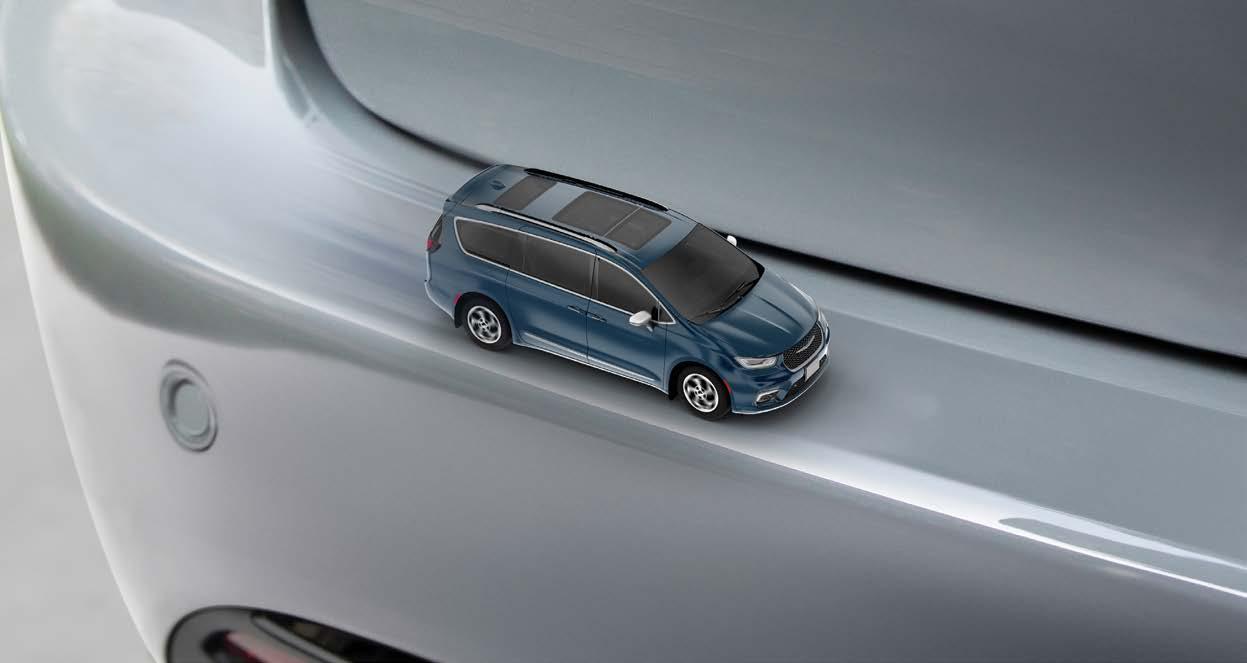

ILLINOIS
JACK PHELAN DODGE
5436 Dansher Road Countryside, IL 60525 (800) 643-6343 Call our stand alone warehouse!
RIVER FRONT CHRYSLER DODGE JEEP
200 Hansen Blvd. North Aurora, IL 60542 (630) 907-0300
INDIANA
EXPRESSWAY DODGE
5401 E. Virginia Street Evansville, IN 47715 (800) 800-1259 Fax: (812) 437-9590
KAHLO CHRYSLER DODGE JEEP RAM 9900 Pleasant Street Noblesville, IN 46060 (317) 773-6363 parts@hellokahlo.com
IOWA
STEW HANSENS DODGE CITY 12103 Hickman Road Urbandale, IA 50323 (515) 331-2901
SHOTTENKIRK CHRYSLER DODGE JEEP RAM
309 South Gear Avenue West Burlington, IA (866) 296-0625 Fax: (888) 945-3729
KANSAS
PARKS MOTORS
11987 SW US Highway 54 Augusta, KS 67010 (316) 775-4390
ZEIGLER CHRYSLER DODGE JEEP RAM ALFA ROMEO FIAT 4200 Parkway Place Dr SW Grandville, MI 49418 (800) 881-3097 (616) 532-4929
MINNESOTA
MILLS PARTS CENTER 2508 Airport Drive SW Willmar, MN 56201 (800) 247-1158

OHIO
CLASSIC CHRYSLER DODGE JEEP
6300 North Ridge Road Madison, OH 44057 (440) 417-1063 (877) 940-8670
KEN GANLEY CHRYSLER DODGE JEEP RAM 310 Broadway Avenue Bedford, OH 44146 (440) 232-4950
By Paul Hughes Autobody News
Illinois body shop owner Tim Paap seeks a site that might otherwise be perfect for a quick-lube oil change joint — but not because he wants to open one.
He’s narrowed scouting to four cities near his headquarters in Mattoon and first “moon” in Charleston.
“I’ll add one, then another, one step at a time,” he said. “I’m still doing my research.”
That involves traffic studies, demographics —median income, say — and other elements. The state of Illinois offers publicly accessible, online information for how busy specific roads are, for instance. For areas’ income and wealth, he wants levels at or exceeding the median, and comparable with what he already does.

The Concierge is Always In
Considering expansion, Paap at first tried buying the competition.
Then, instead of the $3 million a full new facility would’ve required to build, he put a tenth of that into renovating the satellite. It’s about 3,000 square feet, roughly 80 by 40 feet. The second will cost the same as the first to build.
“It’s hard to put more than $300,000 into a satellite,” he said.
After Location, Communication is Key
Charleston and Mattoon are about 10 miles apart. The main site is between the two towns; the first satellite is closer to Charleston. Customers can drop off and pick-up vehicles at either — and any, once more are added.
groups — high school sports, scout troops — for carwash fundraisers. The interior heated open area is rentable for civic and corporate meetings.
“We’re just trying to create an extraordinary customer experience,” he said.
If Satellites are Moons, the Main Office is Paap’s Planet
Think of his Mattoon site as the sun and center of a solar system, or perhaps a planet, planning many moons.
Paap opened it in April 2001. It was a two-car garage at the time, 10 feet from his house.
“We blocked a main road to put in the frame rack,” he said.
Instead, he plans a second “concierge center,” to accompany the one he opened three years ago. Both facilities complement and contribute to the main site of Paap Auto Body next year hits the quarter-century mark. Paap’s mini-sites build his business — $3 million in revenue annually — at a fraction of expansion costs.
The first satellite was at an abandoned Jiffy Lube, closed for a decade. This time, Paap will likely have to build one. Construction takes six months, then he staffs up.
Integrity Automotive Service expanding to a second location in Middletown, OH, as growing demand has pushed the original shop to full capacity, often leaving dozens of cars waiting for service.
The new facility, located at 2512 Atco Ave. and named Integrity Automotive North, will officially open its doors Feb. 2. The original location at 1320 Elliott Drive will be renamed Integrity Automotive South.
Owner Pete Esposito Journal-News the expansion was necessary due to the increasing volume of customers.
“We are just a busy, busy, busy shop,” Esposito said. “On most days, our eight bays are full, and we have 40 cars in the lot waiting for service.”
Esposito, who founded the business 25 years ago, has been searching for an affordable expansion site in the city’s East End. After months of looking, he acquired the former International Garage building in October. The facility underwent
If they’re renting a car — and rentals are a profit center for Paap, and available to the general public as well, not just a service — they drive in, get that initial look-see estimate, “and drive
Paap later built a larger site a grandiose 100 feet from home, and kept adding to it. Now it’s 12,000 square feet and pushing a dozen employees, when the second satellite opens. He does 25 to 30 cars monthly,
















By Paul Hughes Autobody News
Resolutions are a funny thing. We can make them, but are we doing the work?
A saying goes, “Don’t make resolutions — make changes.” But as another bit of wisdom notes, “You gotta start somewhere.” There’s surely a difference between saying we’re gonna do something and doing it.
So Autobody News asked the industry about that difference. We’d previously talked with owners, operators and others about Thanksgiving gratitude and Christmas giving.
The new question — What are your New Year’s resolutions? — garnered fewer responses, at greater depth.
Replies focused on only a few areas, including intentionality, which is that starting point: knowing what we want to do.
Three key action items flow from that: Interact with clients, develop shop staff, plan for the future.
Intentionality; three main tasks. Then get down to doing the work. Here’s some of how that looks for 2025.
Idaho shop owner Greg Solesbee will be spending more time with his customers this year. A lot more.
“Our revamp is to have everything 100% documented,” he said, “then give that information to the customer.”
This also has to do with shops getting paid for the work. It involves OEM legwork and the Database Enhancement Gateway and knowing the law, Solesbee said.
Nobody said better client interaction was easy. Simple, not easy – if it was easy, everyone would do it.
“Everything we do revolves around education,” Solesbee said, “and greater interaction with the customer.”
This goes from first greeting to driving the vehicle off your lot — or delivering it to the client… err, guest.
That’s what Rob Grieve calls them when they come to the shop. Grieve owns Nylund’s Collision Center in Englewood, CO.
“We call them guests here,” he said. And each one is invited to see inside, including during the repairs, “and they get to talk about it.”
That means truly listening to them. What’s really going on, in a from-the-

start tough situation.
Then he talks with them more, on a YouTube channel where every Saturday the shop drops a new video. Then there’s a real-time online discussion with viewers. Anyone can comment. Grieves answers questions right then.
“I talk insurance stuff, what technologies are coming out … in plain English,” Grieve said. “My channel is about consumer education.”
The channel has 250 videos in its vault and north of 900 subscribers. It’s approaching a quarter of a million views, functioning as business-side analog to those popular YouTube repair videos.
Comments are often “people begging for help” and from all across the country, he said. If those consumers of the show become guests of the shop, there’s more talk.
“We sit down with guests, showing them the procedures and the parts.”
Chicagoland shop owner John Melendez in 2025 is focusing on building and equipping his staff, in more ways than one. Last year, he bought new equipment and brought on new blood to run it, particularly in


the paint department.
The plan for this year is giving them the tools to do well.
That includes physical tools, the actual stuff. With increasing complexity in collision repair, that’s a given. It’s also just the baseline requirement of doing the work; it’s a beginning, not a be all.
Beyond that comes a combination of technical and artistic needs: namely information and mentoring, he said.
“Utilize the older talent,” he said, and tap formal “training materials … pulling procedures … in your strong [standard operating procedures] program.”
This then is not the time to try YouTube, but instead to get on-board how to do the specific repairs your techs face. Work with suppliers of information and training.
This as it happens integrates with the personal approach to guest interaction.
I-CAR, talking 2025, puts the two — industry professionals and people they serve — together.
“My mission is to ensure families continue to ride safely in the vehicles our industry services by prioritizing excellence in every repair and











industry project,” emailed Jeff Peevy, vice president of industry relations. This year is more focused on what it calls the “empty chair.”
The idea “serves as a powerful reminder for all industry professionals to keep the well-being of families at the forefront of our discussions and decision-making.”
Melendez adds an eye to the future. He recently told Autobody News about a program JDM Collision plans to start in a charter school for underserved kids. He also has upcoming work with high schools and community colleges on co-op programs for interns.
This isn’t necessarily cheap — if it was, all the people who didn’t do it when it wasn’t easy would join in.
But some easing of costs is possible. Get vendors and other business partners involved for starters.
Seek a state- or Department of Labor-certified program. Melendez noted the Collision Engineering Program, piloted at Ranken Technical College in St. Louis and now running at seven post-secondary schools nationwide.
Tax credits covering up to half of costs can be available, he said,
“if businesses start doing their homework and investing in that individual.”
Training programs for new techs are regularly revised and improved. Laura Lozano at Contra Costa College in California said for 2025, “We took a step back to look at the program going into [the] year, see what we’ve learned so far, and continue to grow.”
A particular focus this year is “the student’s transition into the industry, the professional world. It’s fast, it’s loud, it’s a lot,” and the program will be working more with companies to implement new initiatives.
Melendez said: “We’re focusing on building a new young, solid crew for the future of the business.”
So 2025 goals overlap. Guest and staff experience met; developing staff looks to the future of the business.
“I’m looking to the future, 10 years down the line” said Joe Messina, who owns custom shop Roseleno Inc. in California. He means now the big picture, for a “longish-time dream now in the works.”
2025 for him is to add fun, and “the fun part has been building the business side of it, learning the nuances.”
The shop side, he’s learned since always: at his dad’s shop, or restoring
a car a year “just about every year.”
As custom guys hit their ceiling finding labor, at capacity in their digs — and Messina’s is a “nice old building with a sawtooth wood roof” he has no plans to give up -- they look for a new challenge.
Messina’s looks this year to involve a different angle on automotive services, and greater scale.
“You push all your chips back in the center again,” he said.
Several respondents spoke of work and home in one and a half breaths.
Florida M&A consultant Laura Gay aims for “better balance of work/ life” with a focus on health. Her adult son, sick most of last year, is much improved, and she spends a lot of time on the road visiting shops.
“Each year I have become better at mastering work-life balance,” said Tiffany Silva, a California shop owner, “and I hope to continue that trend and chase my dreams with positivity and purpose.”
Pennsylvania certified collision center manager Randy Kuntz expressed — three ways! — a freewheeling approach to life, and talked of helping a sister shop achieve its own certification this year, along with, like Melendez in Chicago, more involvement with trade schools.
Liz Stein, vice president of strategic initiatives at shop network CCG, is developing “value added programs to help our shops generate revenue,” while planning a trip to Italy with her high school graduated daughter.
“How long is that going to last,” where parents can spend dedicated time with young adult children. “Spend the time,” she said. “It’s why we do what we do.”
Solesbee in Idaho also plans more family time, including trips, and “actually just doing more” in the family. “Our family’s word for the year is ‘intentional.’”
And there it is again: intention and action.
Casey Koehler, a shop owner in Mississippi, doesn’t make resolutions; they’re too easily dropped. There’s a day set aside for this: Quitter’s Day, on the second Friday of each year.
“Stuff can change in a blink,” he said. “You can have a goal, you can have that mindset, but why have it on one damn day. If you have it,” he added, have it always, and do the work.
Koehler is expanding for the second time, moving to a third building, and looking to greater growth this year. He’s 25 years old. Resolutions are a funny thing.

By John Yoswick, Autobody News
Staying on top of changes made to the “P-pages,” or estimating guides, is important for estimators wanting to prepare complete repair plans that capture all labor and procedures involved in restoring a vehicle to preloss condition.
That’s why the Collision Industry Conference (CIC) Estimating and Repair Planning Committee regularly highlights what recent changes have been made.
At the first CIC of 2025, held in January in Palm Springs, CA, the committee focused on some of the changes made in 2024 to the MOTOR Information Systems’ Guide to Estimating. MOTOR is the developer of the underlying database used by the CCC Intelligent Solutions estimating system.

In looking at the guide, which is accessible within the CCC system or available for download at the Database Enhancement Gateway (DEG) website, degweb.org/ccc-motorpathways, sections with changes are identified with a yellow star, and the new or revised text itself is blue.
Committee member Aaron
California, your digital marketing agency, if you’re doing paid ads, should have already informed you of this a long time ago,” Donahue said. “Please look into it if you’re in those

Another key piece of results optimization is determining overall ROI, he noted, adding that shops should correlate dollars invested with the amount of revenue received on booked jobs.

Schulenburg of the Society of Collision Repair Specialists said the guide, for example, has a new section on stainless steel, noting “cosmetic repair to panels and paintless dent repair techniques are an acceptable method for repairing cosmetic panel damage,” but “OEM repair guidelines should be followed.”
dimensional accuracy or adjacent part alignment)” is not included.
The change follows MOTOR’s response to a DEG inquiry, which stated, “If more than one component installation is required for a specific repair plan, an on-the-spot evaluation should be used for the number of fitments beyond the first one required to perform the repair.”

That section of the guide now also states labor times do not include “capping [or] covering electrical connectors and fluid lines (of all types) to prevent contamination.”
bonded, saying such wait time for drying or curing is not considered in MOTOR labor times. Last year, that was added to the Guide to Estimating, which now states, “MOTOR estimated work times are for the actual time that the technician spends on the physical procedure required to complete repairs of the damage.”
Committee member Erin Solis of Square One Systems said the guide now also notes that not just materials but also “consumable product costs” are on the not-included list.
The guide now indicates repair times in the system include just one test fit of a component. Motor clarified in its “estimate work time premise” that a “second or subsequent fitment of a component to the vehicle, for any reason (including verification of
Quickly responding to Google, CARFAX and Yelp ratings can help shops solidify their reputations and raise conversions, Donahue said.
“Before they visit your business… they’ll take a look at your Google ratings; they’ll look at your CARFAX ratings; Yelp; and, they’ll check you out,” he added. “If you don’t have any reviews, which is as bad as not having any current reviews, that’s important. Reviews need to be current; you need to be responding to them as much as possible.”
Committee member Phillip Gallimore of MB Collision Group in Southern California said just as MOTOR has said flash or wait times between material applications are not included in refinish times, the company also has addressed wait times for other drying or curing operations.
Back in 2018, MOTOR responded to a DEG inquiry about automaker procedures that call for a vehicle to sit undisturbed on a bench or jigs after structural parts have been rivet-

“You’ve got belts for your sanders, you’ve got drill bits, you’ve got welding tips, all of those kinds of consumables,” she said.
“I think people get caught up in what they perceive as a consumable,” Schulenburg added. “They perceive that it’s only a material that’s added to the vehicle and not necessarily some of these other components. I think it is easy for people to have a conception that a drill bit is the same as the drill. It’s not. The drill is the tool; the drill bit is the consumable that’s used on the tool.”
The committee also noted neither Solera (Audatex) nor Mitchell made changes to their P-pages or estimating guide in 2024.






Shops can measure ROI through online reporting, shop management programs, customer relationship management (CRM) platforms, or all three, Donahue said.


Conversion maximization is another important pillar of repair shops’ marketing strategy, as about 20% to 60% of today’s overall website traffic isn’t converted into sales, according to Donahue.
“When we hand things off to a marketing agency, all we’ll think about is leads,” he said. “But the reality is the money’s made in the conversion of those leads to booked jobs, and it’s really made in the conversion of those booked jobs into higher tickets.”

In addition to organic search engine optimization and paid searches, working your customer database and remarketing to them via text or email is a key prong of the driving leads pillar of ADMS’s accelerated growth






Tapping into the database is a low-cost way shops can quickly drive leads, Donahue said.
“Send out those offers each and every month to your current client base,” he said. “Even if they don’t like the offer, it doesn’t matter. It helps you stay top of mind with them, and when they start hearing a noise coming from their brakes, the first person they’ll think about is you, because you’re the person that’s constantly staying in touch with them.”












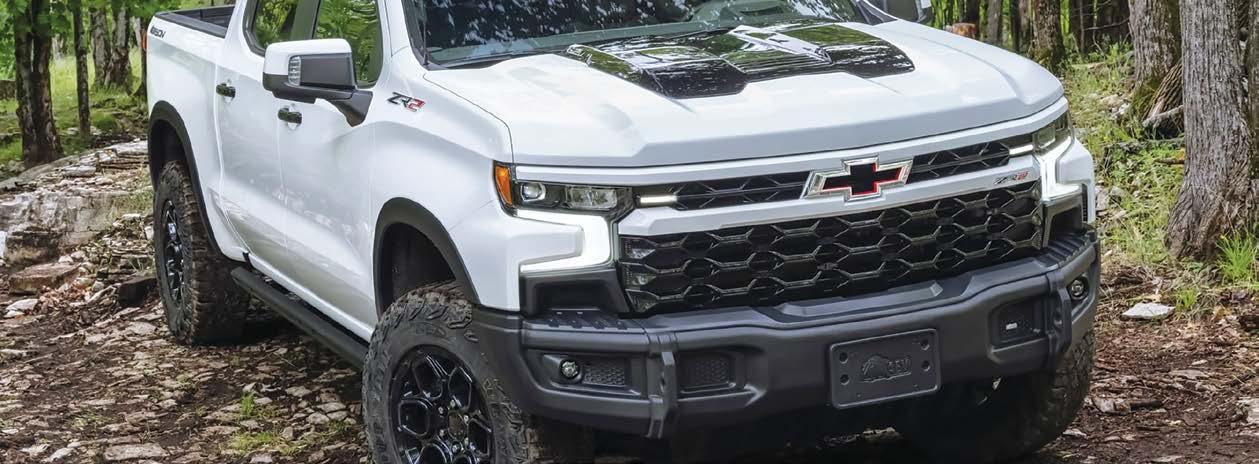










By John Yoswick Autobody News
Several automakers at the recent Collision Industry Conference (CIC) in Palm Springs, CA, provided updates on their body shop certification programs.
Kelli Doherty, who manages the collision repair network for General Motors, said the program now has more than 2,800 dealerowned and independent U.S. shops participating in at least one of the program’s four tiers — basic; battery electric; specialty, such as the Cadillac CT6; and fleet.
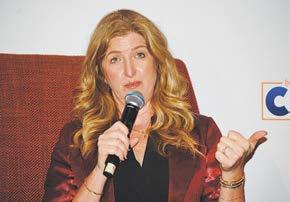
“Recently we added what we call ‘fleet,’ which is essentially a medium-duty delivery van that we call BrightDrop, so that’s making a big splash,” Doherty said. “It’s now badged as a Chevrolet, and we’re working to grow that network as well.”
There are parts for those vehicles that will be sold only to fleet-certified shops.
Doherty also discussed the role of the GM Collision Assistance app in pointing drivers to a GMcertified shop after an accident. Launched this past October, the app — branded differently for each GM line of vehicles — sends a popup notification to the driver’s phone about 10 minutes after a crash is detected. It then helps guide them through collecting information about the incident. Lastly, it offers them a list of GM-certified shops in the area.
Doherty said in addition to providing customer assistance, the app can also help GM-certified shops see a return on their investment in qualifying for and participating in the program.
Without providing a precise timeline, Doherty said “eventually” the app will provide customers a list of only the GM shops certified to repair their particular vehicle model.
“For instance, if you’re driving a beautiful Corvette, the app
will serve up only shops that are certified for that Corvette,” Doherty said. “There’s nothing worse than taking a vehicle to a shop and being told, ‘This car has restricted parts, I can’t fix it. You’ve got to go down the road.’ So we want to take that pain point out for the consumer.”
“You
Volvo certified to get on our EV tier.”
KEN PARK VOLVO
She said the program regularly reviews the lists of tools and equipment required in each tier of shop certification.
“That happens, obviously, when there’s new model changes, but additionally we review these lists with our engineers four times a year just to make sure that we have the latest and greatest,” Doherty said. “Specifically, we’re looking at specbased tools and equipment. We’re not in the business to sell the tools. We’re just trying to make sure that you have the correct equipment to repair the vehicle. So it’s really important that it’s spec-based, for one thing,” rather than requiring a specific tool or piece of equipment.
“But we’re also open to new tools and equipment. There’s constantly new technology out there, and we’re not close-minded,” Doherty added. “There might be a better [option] out there. So we’re constantly reviewing new tools. We’ll bring them in house, we’ll test them and make sure that they meet our specs.”
Also during the presentation at CIC, Ken Park said he started with Volvo in 2017 to develop that company’s shop program in the U.S., which has since grown to 297 shops. He offered an overview of two new Volvo models being introduced this year, both electric vehicles: the EX90 flagship model, and the EX30, which has a starting price of just below $35,000 without incentives.
“You have to be Volvo certified to get on our EV tier,” Park said. “It’s going to be a two-tier program. We’re not looking for all of our shops to be EV certified. We’re probably looking for about 10% of our current shops to get EV certified over the next 12 to 24 months. We know certain parts of the country are filled with more EVs, are more interested in having EVs than others.”
He said Volvo offers 20 webbased courses, and will have a
five-day hands-on course provided by I-CAR at its Chicago area training center. The program will require shops to have two trained technicians.
The battery itself in the vehicles is 110 kilowatts and 1,800 pounds, but Volvo will require its EV shops to have at least 2,700 pounds of battery table lift capacity.

“We want to make sure you’re future-proofing so you can use it in case 150 kilowatt batteries” are in future vehicles, Park said.
Certification also will require at least two EV chargers — one interior, one exterior — two 1234yf refrigerant recovery machines,
and wheel dollies with a minimum of 1,750 pounds per unit. He said the EX90 is about 7,000 pounds, so while a 3.5-ton lift is all that is required, he strongly advises shops looking to buy a new lift to look at a 5-ton model.
Park encouraged shops to use the OEM1stop.com website to make sure they have all the position statements provided by each of the automakers. He noted that Volvo added five in the final quarter of last year alone, related to topics such as post-collision steering column inspections, vehicle scanning and diagnostics, and glass replacement.
“Our position statements are very direct and beneficial to the industry,” Park said. “For those who are not using position statements, I truly advise you to start doing so. I can tell you countless times that I’ve gotten calls from body shops trying to repair vehicles properly and they denied certain aspects of it [by insurers]. Once they show the insurance company the position statement, which in some areas are recommended or a requirement from the OEM, nine times out of 10 they’ll get that repair approved.”


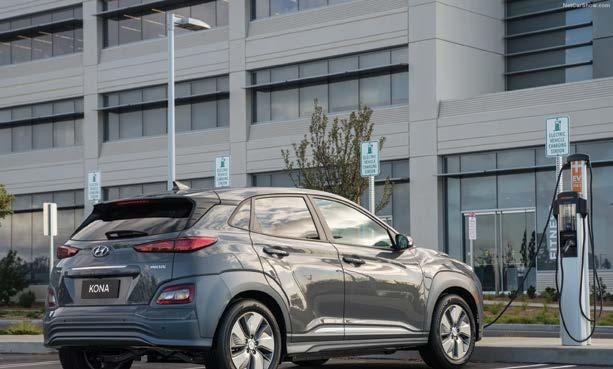









Audi Westmont
276 E. Ogden Ave., Westmont, IL 60559
Parts Direct: (630) 230.2222 / Fax: (630) 655.5750
Hours: M-F 7-6 / Sat 8-4 www.audiwestmont.com
200 E. Ogden Ave
Westmont, IL 60559 www.mercedesbenzofwestmont.com
(630) 654.1039 Phone: (630) 654.8167 Fax:
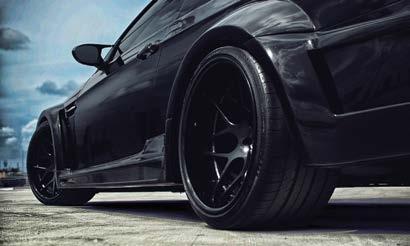




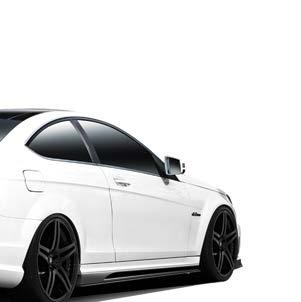

ON THE ROAD WITH MIKE ANDERSON is back every month, bringing expert insights on the hottest issues in collision repair� Join Mike and special guests LIVE as they tackle the industry‘s most pressing challenges�

Authorities confirmed the case is being treated as an arson investigation. Meanwhile, the fire has left Doh with staggering losses, far exceeding his $50,000 insurance coverage. The flames destroyed essential tools, computers and customers’ vehicles.
The shop has played a crucial role in the community, not only providing affordable car repairs but also helping immigrants and refugees secure jobs. Over the years, Doh has trained workers in mechanical skills and even assisted others in obtaining Commercial Driver’s Licenses, helping them launch careers in trucking.
“He’s put drivers through school that came to work for him,” Dennis Chisholm , a neighbor and longtime customer, told KSTP. “Some left and found they were unhappy working for anyplace else and came back.”
Now, community organizations are stepping up to help Doh rebuild. The Karen Organization of Minnesota, which supports refugees and immigrants, has launched a crowdfunding campaign to raise funds for replacement tools and equipment.
“We were really devastated to learn that this had happened to his shop, and insurance would not be covering the full cost of the damages,” said Alexis Walstad , co-executive director of the Karen Organization. “A lot of people who work in the shop are from the Karen community as well as a lot of the people doing commercial driving across the country.”
Despite the loss, Doh remains determined to rebuild. “It’s something I’m proud to do, and I will continue doing it,” he said.
To support the rebuilding efforts, donations can be made to a GoFundMe campaign organized by the Karen Organization at www. gofundme.com/f/rebuild-skd-autotek-after-fire.









By Abby Andrews Autobody News
“On the Road with Mike Anderson
– Serving Up Collision Advice,” a new monthly live podcast powered by Autobody News, premiered Feb. 10 with guest Randy Bottella, president of the Auto Body Association of Rhode Island (ABARI), who spoke about how his association changed the legislative landscape for the state’s repairers –and how other states can do the same. Anderson, who was joined by Sheryl Driggers, his colleague at Collision Advice, also fielded questions from the audience, submitted before the show, and encouraged Anderson opened the show by looking at state-by-state trends in collision repair in 2024. Rhode Island had the highest average severity in the U.S., at $6,969, including both DRP and non-DRP claims.
Rhode Island also showed increases between 2023 and 2024 in the average number of labor hours per repair in body, paint, frame and mechanical –an overall increase of 4.2 hours.
Anderson said Rhode Island’s high average severity can be largely attributed to its legislation. Bottella, who also owns Reliable Collision Repair in West Warwick, RI, agreed.
“We went to legislators because we couldn’t solve this on our own,” he said.
Over the past 15 years, ABARI members have worked tirelessly to educate legislators in order to enact laws that help collision repairers get fairly compensated for performing safe, proper repairs – which ultimately pays off for consumers, who can be sure their vehicles are restored to precollision condition.
Bottella said about 15 years ago, Rhode Island passed a law prohibiting insurers from requiring the use of nonOEM parts on vehicles less than 48 months beyond their manufactured date, unless the repairer received written consent from the vehicle owner to use non-OEM parts.
Last year, Rhode Island passed a bill forbidding insurance companies from refusing the use of OEM parts for vehicles between 48 to 72 months from their manufactured date. The length of time was adjusted in response to the increase in the cost of a vehicle and how long most owners take to pay off an auto loan.
Bottella said getting the first law written and passed was the “heavy
lift.” ABARI brought aftermarket and OEM parts to the Rhode Island State House as a “show and tell” to illustrate the difference in quality to lawmakers.
“That really hit home,” he said.
ABARI also showed lawmakers that OEM repair procedures require OEM parts for leased vehicles, and
repairers quickly ran into an issue with Asian brands that called necessary procedures “recommended” instead of “required.”
Anderson, who said he leads training for several OEMs through Collision Advice, explained that in Japan and Korea, it’s considered

that customers could be charged for using aftermarket parts in a repair when turning the vehicle in at the end of the lease. ABARI invited consumers to testify about real situations where they were harmed by the problematic claims process.
“Once they saw it could put consumers in harm’s way, they passed the law to protect consumers,” Bottella said.
He said most shops have a customer request form for OEM parts, which becomes part of the documentation turned into the insurance appraiser.
Rhode Island law addresses the amount of time insurance carriers have to inspect a vehicle – three days for an original estimate, and four days for a supplement – but repairers said insurers weren’t adhering to it. “It could take weeks” to get an inspection, Bottella said.
Legislators amended the law to say if insurers don’t meet the timeframe criteria, they lose their right to do their own inspection of the vehicle.
“That has been a game changer,” Bottella said. “Insurance companies have stepped way up on their efforts to get here and inspect a car.”
Bottella said four years ago, Rhode Island passed a law mandating insurers pay for necessary procedures, but
He said repair associations in other states shouldn’t look for a “magic bullet” – a single law that will fix all of their issues – because that doesn’t exist. They also shouldn’t get discouraged if a bill doesn’t get passed the first time around.
“It’s taken years,” Bottella said of the effort in Rhode Island. “I don’t want anyone to think they could solve all their problems in one or two years. This took well over 15 years.”
Insurance companies will always say proposed legislation will drive up customers’ premiums, or they might threaten to leave the state, Bottell said.
“It’s an empty threat because at the end of the day, they need to sell premiums to make money,” Bottella said.
Anderson said repairers should attend politicians’ fundraising events – not only because you have to “pay to play” in politics, but because it’s the best chance to educate lawmakers on the issues facing the industry.
condescending or disrespectful to say something is “required.” Calling it “recommended” is polite.
Bottella said the law has since been amended to require insurers pay for both “recommended” and “required” procedures.
“Consumers are the cornerstone of what we do,” Bottella said of ABARI’s efforts to pass laws.
He said consumers in Rhode Island now know what ABARI is and everything it has done to protect them, because shops inform them of the laws in place.
“People aren’t versed in it until they’re in an accident,” Bottella said. “It takes public awareness campaigns and the shops to make them aware.”
Driggers said she once conducted research for an auto body shop in another state by asking customer focus groups about their thoughts on OEM parts and safety inspections.
“Customers can’t believe it’s even a question that OEM parts and safety inspections wouldn’t be paid for,” Driggers said.
“I hope states from around the country are tuning in to hear what Rhode Island did and how to facilitate that in their state,” she added.
“This is unquestionably a worthwhile effort,” Bottella said. “It’s gonna take time, it’s gonna take money, but it is worth it in the long run.”
“Legislators can’t be experts on everything that comes up in the bills every year,” Bottella agreed. “You have to be willing to go to their fundraisers and get that face time, to educate them on issues and how to solve them.”
Bottella said ABARI is willing to help any other state repair associations trying to get similar laws enacted.
“A lot of these laws didn’t exist anywhere else, but now we can show other states’ legislators examples of Rhode Island laws,” he said.
Anderson wrapped up the live podcast by answering viewer questions about the potential impact of tariffs on the industry, solutions to help customers shoulder unexpected out of pocket repair expenses, and blending difficult refinishes like pearl whites.
Anderson said future episodes of “On the Road with Mike Anderson” will be broadcast from shops around the U.S., and encouraged shop operators – or any industry stakeholders – to reach out to his team if they would like to be featured on the show.
The second episode, scheduled for 4 p.m. ET/1 p.m. PT March 10, will be broadcast live from Wallace Collision Center in Tennessee with John Baker, director of operations.
The focus will be on safety inspections, including live demos with a technician at Wallace Collision Center.
savings and precision fit with genuine parts

• Save time and money: reduce returns by up to 16%
• Faster ordering process
• More accurate orders
• Easier invoice processing
• Live information
• Seamless fit
• Competitive pricing

Please
Honda of Lisle Lisle
866-874-6632
630-437-5299
Dept Hours: M-F 7-5 WholesaleParts@HondaofLisle com
INDIANA
Bob Rohrman Honda
Lafayette 765-588-9984
765-448-1000
Dept Hours: M-F 7:30-5:30; Sat 8-3
Brho partsmgr@rohrman com
Suburban Honda
Farmington Hills
248-427-7996
Dept� Hours: M, Thu 7-8; Tue, W, F 7-6; Sat 8-3 nowiesny@suburbancollection com
Victory Honda
Plymouth
800-824-4646
734-453-3600
Dept� Hours: M-F 7:30-7; Sat 8-4
Robert rosenau@victorytoyota com
McGrath Acura of Morton Grove
Morton Grove
847-470-2308
Dept Hours: M-F 7-7; Sat 7-4 acparts@mcgrathag com
Jay Wolfe Acura of Overland Park
Overland Park
913-648-2287
Dept Hours: M-F 7-5; Sat 8-4 wozburn@jaywolfe com
Ziegler Honda
Kalamazoo
855-513-4477
269-585-5812
Dept Hours: M-F 8-6; Sat 8-2 glenloubsky@ziegler com
Brookdale Honda
Brooklyn Center
800-899-8900
763-331-6880
Dept Hours: M-Thu 7-9; F 7-6; Sat 8-6 parts@lutherbrookdalehonda com
Luther Hopkins Honda
Hopkins
800-328-6016
952-908-8585
Dept� Hours: M-F 7-6; Sat 8-4 parts@hopkinshonda com
Richfield-Bloomington Honda
Richfield
800-328-2703
612-866-8197
Dept Hours: M-Thu 6:30-7; F 6:30-6; Sat 6:30-5 parts@rbhonda com
Luther Bloomington Acura
Bloomington 800-451-5078
952-887-0600
Dept Hours: M 6:30-6; Tue-F 6:30-9; Sat 8-4 parts@bloomingtonacura�com
Columbia Acura
Cincinnati 844-677-4902
513-530-0698
Dept Hours: M-F 8-5:30; Sat 8-12 columbiaparts@email com
Bommarito Honda
Hazelwood 800-731-8270 314-731-8270
Dept Hours: M-Sat 7-6 cmelvin@bommarito net
Ed Napleton Honda St Peters 800-875-4190 636-928-4400
Dept Hours: M-F 7-6; Sat 7-5 gethondaparts@napleton com
Columbia Honda
Columbia 573-818-3650
Dept Hours: M-F 8-5:30; Sat 8-4 gropp@columbiahonda com
Honda of Tiffany Springs Kansas City 816-452-3221
Dept Hours: M-Fri 7-6; Sat 7-2 parts@hondats�com
Superior Honda Omaha Omaha 402-408-1100
Dept Hours: M-F 7-5:30; Sat 7-5
Jay Honda Bedford 800-509-9057 440-786-3363
Dept Hours: M-F 7:30-6; Sat 8-4 jayhondaparts@gmail com
Jim White Honda Maumee 419-893-0335 4419-893-5581
Dept Hours: M-Th 7:30-7 T W F 7:30-6 Sat 8-4 ataylor@whitecars�com www�jimwhitehonda�com
By Paul Hughes Autobody News
Mike McQuigg will return to his first love, but he’s not necessarily selling his shop to do it.
McQuigg owns CarTech in southern Oregon, a conventional collision shop, and is setting up a smaller operation to refocus exclusively on custom and restoration work.
“I’m wasting a lot of time and skill fixing dents,” he said. The new set-up will be “way less stress, doing more of the stuff I enjoy.”
The 1930 Model A, 1972 Bronco, and Freedom CarTech, in Medford, is about 6,000 square feet grossing $800,000 a year. It has six employees and works on 60 to 70 cars a month. The shop’s been there eight years; McQuigg leases its dirt.
His new shop will be about 2,000 square feet. He’ll rent a paint booth.
McQuigg started out in his dad’s shop.
“It’s hard to find guys to do specialized work,” he said, “and I’m going to start doing stuff with my dad again.”
His current shop is permitted, with production accounts and off-the-street
work on Nissan, Dodge, Honda, Kia and others. He’s got plenty of tools for both shops, and doesn’t have to sell. His wife Cassy will oversee office duties and social media.
He has work lined up: a ’30 Model A and a ’72 Bronco. For his own stable, a wide body ’68 C-10.
“I’ve got a pretty good reputation for this kind of work,” he said. “Custom to me is whatever spikes my interest, the freedom to do what I want.”
In Middle River, MD, Ron Collins wants to downshift, and is looking for someone to run the business.
Collins Collision Auto Repair has been his since 1996; he’s been in the industry since about the mid-‘70s.
He started his shop because “I was tired of working for the dealer, and watching how other people do it.”
It’s possible to say Collins is stepping back for not dissimilar reasons: a certain amount of fatigue has set in.
“Time does not stand still,” the 64-year-old noted with some rue. “I’m not getting any younger.”
Collins looks at it not as retreat, but redirection, planning travel and time with grandkids.
“I’ll hunt a little more, fish a little more,” he said, and be with family.
The shop is 5,000 square feet and, “we’re not slow,” he said.

full-time status. From the flip side, one recent searcher sought a shop in Long Island, NY, where he could “rent-toown” so to speak, and pick up the slack an owner might want to give. It’s not as common as selling, though not unknown. Same time, they’re also not setting a trend.
Mike McQuigg owns CarTech in southern Oregon, a conventional collision shop, but is setting up a smaller operation, pictured here, to refocus on custom and restoration work.
Collins is looking for a manager, possibly a part-owner. “Either, or; it just depends.”
He said at one point Gerber had kicked the tires a bit, but talks ended.
“Eventually, I want to step down entirely.”
More Sell, Which Can Be Harder McQuigg and Collins aren’t alone.
Autobody News found a North Carolina owner looking to dial down
Paul Williams, president of regional multi-state MSO Brightpoint Auto Body Repair, hasn’t seen the desire in about a dozen shops in six states. Occasionally when Brightpoint buys, a family member of the seller wants to stay with it and continue working in the shop, but for the most part, buyers buy and sellers sell.
“I haven’t run across this before,” he said in an email.
“The reason why is owners have a hard time letting go of the day-to-day operations.” It’s a “business ownership” mindset that’s reflected in their actually owning the shop, or by the intensity of their pursuit, if the buyer.
Most shops pursuing this will ultimately sell; most buyers will want to run the shop themselves.
For a few, though, it’s a way out — and a way in.



The Omaha Fire Department (OFD) crews battled a four-alarm fire for nearly two hours early Jan. 16 at Bumper and Auto of Omaha in Nebraska, located near 13th and Center streets.

the response to a second alarm as crews struggled to contain the blaze. Firefighters fought the flames for approximately 40 minutes before conditions inside the building worsened, forcing crews to withdraw from the interior and roof. By 12:30 a.m., a third alarm was called as the fire began breaching the roof structure. Crews had exited the roof moments before it started to collapse.
models by global automakers, with deployment on more than 80,000 vehicles. Cap projects they will reach more than 800,000 vehicles within the next five years.
Firefighters arrived shortly before midnight Jan. 15 to find heavy smoke and flames pouring from the windows and doors of the shop, prompting an immediate working fire declaration, according to fire officials.
At 12:15 a.m., OFD escalated
A final fourth alarm was issued at 1 a.m., bringing additional resources to the scene. The fire was ultimately declared under control shortly after 2 a.m. Jan. 16.
Despite the intensity of the fire, no injuries were reported, and officials confirmed no one was inside the building at the time. Damage estimates place the loss at approximately $1.25 million. The cause of the fire remains under investigation.
XING Mobility presented its immersion cooling battery technology for vehicles and energy storage and received a CES Innovation Award in the category of Sustainability & Energy/Power for its IMMERSIO™ XE50 Battery System. Established in 2015, the company focuses on research and development and manufacturing immersion-cooled battery solutions for electrified mobility and energy storage markets.
“Our goal is to deliver safer, more efficient and reliable battery systems by leveraging the superior efficiency of immersion cooling,” said Ida Wu, general manager of XING Mobility.
The company’s booth featured the award-winning IMMERSIO™
XE50 Battery System, Cell-to-Chassis (CTC), and Cell-to-Pack (CTP) battery systems, an MIT electric supercar Miss R, and XING Mobility’s new AI Battery Management System and energy storage.

“The immersion-cooled CTC battery system integrates the battery cells directly into the vehicle chassis, which optimizes space utilization and improves thermal management,” explained Wu. “By immersing the battery cells in a dielectric coolant, the system ensures uniform cooling, enhancing both safety and performance and bringing energy density up to 208 Wh/kg.”
She said this approach minimizes the risk of thermal runaway and extends battery life. In addition, the AI-driven Battery Management System (BMS) continuously monitors and analyzes battery performance.
“Through predictive analytics and adaptive algorithms, the BMS ensures optimal energy consumption, precise thermal control and a prolonged battery lifespan,” said Wu.
Wu said immersion cooling is becoming increasingly popular in the EV and the energy storage system (ESS) sectors and gaining traction in industries requiring high power output and sustained performance. These systems are currently being used in passenger cars, commercial vehicles and energy storage markets, where safety, efficiency and reliability are paramount.


25580 Lorain Road North Olmsted, OH 44070
jim.j@ganleywestside.com www.kenganleyvwnortholmsted.com
Extensive Inventory of Genuine Volkswagen Parts Updated Daily
Team of Knowledgeable Wholesale Parts “
Professionals Ready to Help You
Delivery area counties: Cuyahoga, Lake, Geauga, Huron, Erie, Medina, Sandusky, Ottawa, Summit and Lorain
Fast Free Same Day, Next Day and Hot-shot Deliveries
Online ordering through

By Stacey Phillips Ronak Autobody News
With the automotive industry undergoing a profound transformation, professionals from more than 170 countries had an opportunity to view the latest vehicle innovations at Automechanika late last year in Frankfurt, Germany, many of which are headed for the U.S. market. Future technology and sustainability were key themes, with a focus on artificial intelligence (AI), electrification and digitization. The event, held every two years, was organized by Messe Frankfurt GmbH.
Detlef Braun, a member of the executive board of Messe Frankfurt, said the automotive industry is continuing to innovate at a breakneck pace and Automechanika featured the most important trends and developments in the industry today.
Some of the educational sessions held in the Body and Paint section included the transformation in preparation and refinish, innovations reshaping body repair, and innovations in AI, automation and sustainability.
As part of the Electric Vehicle



Expo, nearly a dozen Chinese auto manufacturers, including BYD and Geely Holding Group, with its brands Geely Auto, Lynk & Co. and ZEEKR, exhibited their EV lineup. CATL

Philipp von Westerholt, coordinator of business development and automotive events for the Messe Frankfurt Exhibition, at the Innovation4Mobility area of the show.
showcased its EV battery technology. This included Shenxing PLUS, which enables an approximate 830 km range and a 10-minute charge, and the Qilin battery, a lithium-ion battery pack.
Philipp von Westerholt, the coordinator of business development and automotive events for the Messe Frankfurt Exhibition, described Automechanika as a leading show for professionals in the automotive market. The event began in the early
1970s and primarily focused on the automotive aftermarket. Over the years, organizers have added topics pertaining to the developing automotive industry, including EVs, vehicle technology and mobility.
This is the second time Automechanika has included a dedicated area for Innovation4Mobility.
“For us, it’s important to find a bridge between the OEMs and the aftermarket industry,” von Westerholt explained. “This is the intention with the Innovation4Mobility area.”
He said it emphasizes that Automechanika is not only the leading show for the aftermarket industry internationally, but there is more. In addition to displaying industry technology, there was a networking space to encourage attendees to discuss industry issues.
“The idea is to offer attendees knowledge, so they get inspired,” said von Westerholt.
Innovation4Mobility organized various presentations to attend throughout the show focused on current and future issues. These included electric drive systems, hybrid cooling systems, hydrogen vehicles, sustainable fuels and cybersecurity.
In addition to the indoor Innovation4Mobility area, the Future Mobility Park in the outdoor Agora area allowed visitors to test alternative drive systems from BYD and Volkswagen and learn about e-charging systems, storage technology and batteries, alternative fuels and photovoltaics. An e-offroad vehicle powered by solar power, which reached the highest volcano in the world, was also on display.
The “Workshop of the Future” was organized in collaboration with the Zentralverband Deutsches Kraftfahrzeuggewerbe (ZDK) and the Zukunftswerkstatt 4.0 (Future Mobility Workshop 4.0) of the Institute for the Automotive Industry (IfA). Attendees could view technologies focused on artificial intelligence (AI), robotics, extended reality (XR), automation and digitalization.
Charles Canning, director of Cannings Auto, a third-generation motor body repair shop in Cape Town, South Africa, attended Automechanika for the first time. He said his business is very tech-driven and he came to the event for personal development and to learn about new technology available to stay ahead of









“There’s a lot to take in and it’s coming at us at a faster rate than I think we expect it to,” he said. “I want to have good insight into that from a business perspective.”
In addition to visiting his suppliers, Canning had an opportunity to listen to presentations and network with attendees. He recently became a director of HALO, a newly launched independent nonprofit company for motor body repairers (panel beaters) in South Africa. There are 11 directors strategically placed across South Africa.
Canning said there is a lot of funding available from local government and insurers in South Africa for smaller shops battling to get into the OEM space.

“I want to show the industry what is available in the insurance and OEM sectors in South Africa to empower motor body repairers to move forward with these trends and technology.”
The following is a summary of some of the products and services offered by exhibitors at the show.
Autel Europe showcased the MaxiSYS ADAS IA600 and the Intelligent MaxiSYS ADAS IA900WA Wheel Alignment.
The IA600 is a portable 3D camera ADAS calibration tool that supports laser calibration technology.
Massimo Girlanda, Autel Europe sales manager for diagnostics & ADAS, said it provides accurate calibration placement for ADAS and was designed with a modular frame to make it easy to move and transport.
“With its step-by-step graphic instructions, the IA600 makes the calibration process straightforward and easy to follow,” explained Girlanda. “By aligning with the vehicle’s thrust line, the tool ensures optimal calibration accuracy, even for complex ADAS systems.”
The Intelligent MAXISYS ADAS IA900WA and ADAS calibration frame enables repairers to do a four-wheel alignment and ADAS calibration. It includes lane departure warning

targets and boards for calibrations and the MaxiSys Ultra ADAS tablet with alignment and ADAS software. Girlanda said six high-resolution positioning and tracking cameras can monitor vehicle height on a shop lift and the robotic frame is easy to move. He added that the alignment reading accuracy is 0.02 degrees for precise alignments. The company also launched a new accessory at the show for the IA900WA that allows the alignment of headlights using Matrix technology.

Bosch
Bosch featured a variety of products, as well as live demonstrations and previews of future offerings. This
included parts and test equipment for collision repairers, such as the DAS 300 S20 calibration and adjustment device. The new HV battery repair kit and ADAS One Solutions software were on display, as well as an updated version of the ESI[tronic] Evolution software for vehicle maintenance, diagnosis and repair.
The company also introduced the Bosch Vehicle Health Certificate. Using established diagnostics solutions, the data stored in the vehicle is read out remotely from the control units, processed and consolidated in a vehicle-specific Bosch certificate.
Nico Krespach, Bosch’s mobility aftermarket public relations spokesperson, said it’s a quick and easy solution that assesses the status of used vehicles based on software.
The certificate is targeted to body shops, fleet operators, used car dealers, vehicle appraisers and used car sellers and buyers. Krespach said it provides crash history to determine if the vehicle has an impact and from which direction, information about possible overdue service, and current error codes stored in the vehicle system. It can also indicate potential mileage deviation or manipulation. For EVs, it will determine the health status of the high-voltage battery.
“It’s going to help with repair

























planning and writing more accurate estimates,” explained Krespach.
The product will initially be offered to the European market and is expected to be rolled out to the American market.
Circular Economy Solutions GmbH (C-ECO) took part in Automechanika’s Sustainability Court, a dedicated space for companies and presentations focused on sustainability. As a worldwide operation company, C-ECO develops business models for the circular economy and showcased its CoremanNet service. CoremanNet provides a systematic circular economy for used automotive parts. This includes the physical collection, core inspection, warehousing and financial accounting.
“Until now, the economy has mainly operated on a ‘take-make-dispose’ model — a linear model where every product is bound to reach its ‘end of life,’” according to company representatives.
The CoremanNet App, demonstrated at C-ECO´s booth, links technical vehicle data to used automotive parts to improve the remanufacturing of these components for a second product lifecycle.
“A lot of companies are struggling with core management,” said Markus Wagner, the innovation lead at C-ECO. “They know how to remanufacture their products but I think a major issue
for them is how to get the used parts and get them back. Our aim is to enable companies to start and professionalize sustainable business models by taking away the complexity of core management.”
The company inspects old parts worldwide, sorts them for production and provides on-demand used parts to the corresponding remanufacturing plants. CoremanNet handles approximately 4 million used automotive parts worldwide.
DAT showcased a vehicle damage scanner built by Auto Damage Inspection (ADI).
Raphael Dammann, head of sales strategy at DAT, said the scanner is one of several ways of professionally recording damage. High-resolution cameras document the vehicle’s outer skin as the car is driven through the scanner. The DAT software then uses AI to detect and calculate the damage. The scanner is currently being used at the Düsseldorf airport to analyze vehicle damage on rental cars.
“The car scanner at the DAT stand at the Automechanika Frankfurt 2024 was a real crowd-puller for the numerous trade visitors and the many hundreds of trainees who came to see us,” said Dammann.
He said the vehicle scanner has a
lot of potential; the goal is to continue expanding its use.
“Customers appreciate the combination of increased efficiency in everyday work, the documentation of the vehicles at entrance and our AI software FastTrackAI®,” he explained.
“This form of convenient claim recording is to be made possible for an even larger group of customers in the future.”
FUTURUS presented some of its latest

technology in head-up display systems. This included the augmented reality head-up display (ARHUD), which uses augmented reality (AR) technology to project navigation guidance information onto the road. It uses virtual arrows that merge with the road to guide the vehicle, providing advanced

notice for lane changes, turns, etc., without requiring additional thought from the driver. It also integrates with the AD functions to offer services such as night vision, collision warning, lane keeping, lane departure warning and blind spot warning.
“Compared to WHUD (windshield head-up display), ARHUD significantly enhances the user experience during driving, offering intuitive and effortless driving guidance,” according to the company.
FUTURUS has also developed a WHUD product that replaces traditional instrument panels. The company said it offers a superior optical experience with clarity, fineness and no distortion, double images or graininess. In addition to displaying various information on the dashboard, such as speed, tire pressure, fuel consumption and speed limits, it can project navigation, assisted driving and other multimedia screen information.
SATA introduced its Liner Cup System (LCS) during the show. Jari Pfander, head of marketing and communications at SATA, GmbH *& Co. KG, said for shops that prefer working with flow cups — also known as liner cups — SATA’s new system fits on all the company’s paint spray guns with a Quick Cup Connector (QCC)


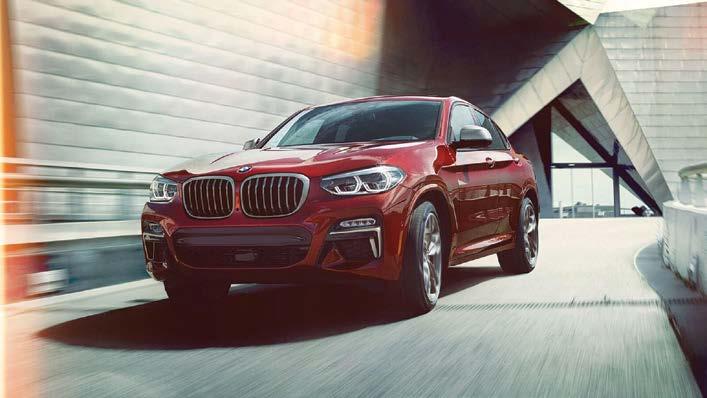


connection. No adapter is required. Pfander said this provides a more favorable center of gravity, easier cleaning, low weight and less damage to the spray gun. LCS is available in .40, .65 and .85 liter.
SATA also demonstrated the jet X spray gun, which is available in four versions: the jet x BASIC, jet X DIGITAL ready, jet X DIGITAL and jet X DIGITAL

pro.
“The nozzle concept of the jet X is based on the innovative labyrinth airflow system,” explained Pfander. “It guides the air in the nozzle in such a way that it exits each orifice at exactly the same pressure and is free of turbulence and pulsation. This enables painters to achieve fine and homogenous atomization and a new level of surface


quality, both for high volume low pressure (HVLP) and reduced pressure (RP) technology.”
The jet X BASIC is an analog version with the same nozzle technology and ergonomics but without digitalization.
The jet X digital-ready spray gun can connect the SATA QAC (Quick Adam Connector) to add a digital adam X or adam X pro without a docking station.
The jet X DIGITAL includes adam X, which measures inlet pressure and temperature in the paint booth, operating time and battery status to ensure precise control and optimum painting results. It also provides the ability to switch from bar to psi.
The jet X DIGITAL pro offers a variety of digital functions and includes the adam X pro, which helps painters analyze and control the painting process. It can display deviations from the target pressure set; if the deviation exceeds .2 bar/29 psi, an optical alarm is triggered.
Snap-on Equipment GmbH showcased several pieces of equipment as part of the Total Shop Solutions (TSS) Snap-on brand. This included the award-winning John Bean Tru-Point ADAS calibration tool that uses advanced camera and target technology to ensure precise placement of ADAS targets and fixtures. The company received a 2024


Automechanika Innovation Award in the Workshop & Service Solutions category for the John Bean Tru-Point 3D positioning of ADAS calibration accessories, featuring the TGT-05 and BKT-16.
The TGT-05 enhances 360-view calibrations for manufacturers using vinyl mats, which the company said is a significant improvement over traditional methods. The BKT-16 advances ADAS accessory placement for blind spot calibrations, streamlining the calibration process.
“We are proud to share that the John Bean Tru-Point 3D Positioning of ADAS Calibration accessories has been judged as the unsurpassed winner of 52 entries in the Workshop & Service Solutions category,” said Mariana Montovaneli, director of marketing for John Bean. “Earning this prestigious award is an exciting moment for all of us and is a reflection of the expertise and dedication of our team.”
Jordan Krebs, product manager for alignment and ADAS in the Americas, said the engineering group put a lot of effort into ensuring the accuracy of the products.
“Customer connection between product management and engineering led the development of these innovative products,” said Krebs. “It was a team effort to ensure the TGT-05 and BKT-16 met our demands for accuracy
and improved shop efficiency.”
The booth also featured products from other Total Shop Solutions brands, including Hofmann, Blackhawk, Cartec, Car-O-Liner, Ecotechnics, Josam, Kansas Jack, Pro-Cut and SUN. Handson demonstrations were offered for many of the products.
Spanesi
Spanesi showcased a variety of equipment at the show, including the Minibench. Designed to repair small and medium damage, Jeramy Holloway, aftersales director, saidit’s

sturdy and compact, easy to use and occupies very little space inside a body shop.
“The Minibench can be used for most vehicles, including commercial vehicles, SUVs and 4x4s,” explained l CONTINUED ON PAGE 30

























During Lund’s tenure, MABA achieved significant milestones. In 2024, he coordinated 28 educational events with 30 presenters from 15 states, collaborated with Nebraska Auto Body Chair Dave Yard to host the third annual Midwest Trade Show, and partnered with 36 vendors, supporting the association’s mission of education and advocacy.
Founded in 2021, MABA is an active industry association that recognizes the changes taking place in the industry with new technology, training and repair materials, autonomous driving modules, insurer regulations and OEM certifications.
MABA’s mission is to service members and the Missouri public through leadership, education and initiatives that further uplift the professionalism and business conditions of those engaged in the state’s collision industry for the safety and knowledge of the consumer.
As the association grows, Cotton said MABA is committed to advancing the collision repair industry in Missouri and beyond.
“Tanner Kemna and Jared Nicholson are dedicated to fostering education, advocacy and innovation within MABA,” said Cotton. “Together,
they aim to empower members, modernize industry practices, and build a sustainable future for collision repair.”
Autobody News spoke to Kemna and Nicholson about their industry views and vision for MABA.
Tanner Kemna
Kemna grew up in the family business founded in 2006 by his parents, Greg and Kristi. With an understanding of the technical and business sides of the industry, he worked in nearly every aspect of the body shop.
After graduating with a bachelor’s degree in business administration from the University of Central Missouri, he returned to Jefferson City to help lead the family business.
Kemna didn’t plan on working in collision repair; however, his career path evolved and he realized how rewarding and dynamic the industry could be. He is passionate about the industry and strives to improve the quality of repairs and the customer experience.
From working on cars to engaging with customers, he enjoys the variety of tasks and challenges collision repair offers.
“Having hands-on experience across all areas of the business has allowed me to understand the challenges faced by team members
and ensure the business runs smoothly,” he noted.
One of the most rewarding aspects of Kemna’s job is helping people through difficult situations.
“While you can’t always control what happens to a vehicle, you can control how you treat customers and how you respond to challenges — providing exceptional service and care every step of the way,” said Kemna. “The collision repair business is more than just fixing cars— it’s about helping people through tough situations and ensuring they feel supported every step of the way.”
He stressed the importance of continuously adapting in the technical and business aspects of collision repair.
“Shops need to prioritize proper education and training — both for technicians and shop owners and managers,” he said.
He advocates for shops to be confident in charging appropriately for the repairs required to restore a vehicle to its pre-collision condition.
As the industry continues to evolve, Kemna is committed to staying current with the increasing complexity of vehicles, new technologies and repair methods and the shift toward digital communications.
“As vehicles become more complex, it’s essential that repair shops have the

knowledge and tools to handle the evolving technologies in modern cars,” he noted.
Committed to progress, Kemna serves on advisory boards for the State Technical College of Missouri and Nichols Career Center, ensuring the industry stays aligned with emerging technologies and practices.
As president, he plans to focus on key challenges in the collision repair sector, including the shortage of skilled technicians, the need for continuous training and communicating with insurance companies. He plans to collaborate with other industry associations to foster vocational training and technological adaptation.
An advocate for industry associations, Kemna encourages repairers to get involved to help foster change.
“Local associations offer valuable resources for training, networking and advocating for necessary legislative changes,” he shared. “By attending workshops, webinars and industry events, shop owners and technicians can share knowledge and implement best practices.”
Additionally, he said that associations help build connections between repair shops and vocational schools, ensuring that the next generation of technicians is properly trained and ready to take on the














challenges of an ever-evolving industry. He is dedicated to helping make the collision repair industry a more attractive and sustainable career path for future generations.
Looking ahead, he said change needs to happen now.
“Whether it’s through education, legislation, or increased support for vocational training, the collision repair industry must embrace modernization,” said Kemna. “This starts with shop ownership and management. Being willing to accept and implement new practices will ensure the industry continues to grow and thrive.”
Nicholson brings more than 20 years of experience in the collision repair industry to his new role as vice president of MABA. After earning an associate’s degree from State Technical College of Missouri in 2001, Nicholson began his career as a porter at a Ford dealership in Sedalia, MO.
His passion for the collision repair industry grew after his older brother’s car accident, sparking his interest in restoring damaged vehicles. His love for cars, hot rods and motorcycles further fueled his commitment.
This propelled him into more advanced roles, and he became a combination body and refinishing technician. In 2009, Nicholson was
hired as a body technician at a Ford dealership in Lee’s Summit, MO. By 2016, he was promoted to collision center manager, overseeing operations and ensuring quality repairs.
Nicholson joined Collision Leaders in 2021. Under his leadership, the company has expanded into a regional brand with collision centers in Missouri and Kansas.
Nicholson’s expertise spans all aspects of collision repair, including production management, mechanical and electrical diagnostics, auto physical damage appraisal and estimating. Inspired by visionaries like Henry Ford and Elon Musk, Nicholson said he believes in mastering all facets of the business to positively influence every department and employee, ensuring long-term success for the organization.
An advocate for industry advancement and professional development, Nicholson has earned numerous certifications and accolades, including the prestigious 2024 Jeff Silver Award, presented by I-CAR in November 2024 during the Collision Industry Red Carpet Awards at the SEMA Show in Las Vegas, NV. Nicholson is an ASE Master Certified Technician in estimating, ADAS and welding techniques, and has PPG Master Level certifications
in multiple refinishing systems. He has also been an I-CAR Platinum Individual since 2015, with nine certifications across structural and mechanical repair, diagnostics and production management.
He also strives to stay at the forefront of evolving technologies.
“Nicholson is committed to the future, advocates for best practices and fair industry standards, and promotes education and partnerships between shops and vocational schools,” said Cotton. “His passion for the automotive repair industry makes him a respected leader and advocate for the future of collision repair.”
Through hands-on training sessions, job shadowing programs and educational events, Nicholson actively mentors young professionals entering the industry, collaborates with local schools and participates in advisory boards to support future generations of technicians. He also encourages association involvement.
“I believe associations play a vital role in ensuring technicians stay ahead of technological advancements, promoting fair industry practices, and facilitating knowledge-sharing among peers,” said Nicholson. “As MABA vice president, I hope to help shape the future of the collision repair industry through education, advocacy and mentorship.”
Michael Busch Memorial Scholarship Applications Open
The ASE Education Foundation announced applications are now open for the Michael Busch Memorial Scholarships, which will provide financial assistance to students preparing for careers in the collision repair industry.
Applications are being accepted through March 31 for two scholarships that will be awarded for the 2025-26 academic year.
The scholarships are available to high school seniors, high school graduates or individuals with a GED certificate who are enrolling or planning to enroll as full-time students in a two- or four-year college, university or an ASE-accredited postsecondary collision repair program.
Established in memory of Michael Busch , the scholarships honor the son of Jim Busch , a former collision shop owner and ASE board member from Issaquah, WA. Michael was an automotive technology student who tragically lost his battle with cancer.
Students interested in applying can submit their applications at AutomotiveScholarships.com/ apply-online.























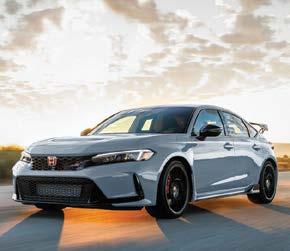

651-484-1970 Fax www.buerklehonda.com Fue.yang@buerkle.com


Holloway. “Incorporating the Touch electronic system, the Minibench can be used as a lift or straightening bench, with a 6-ton pull column capable of delivering 360° pulls around the entire vehicle.”
Demonstrating its commitment to sustainable development, Spanesi introduced its “GREEN LINE” products that have low environmental impact. The company featured the ELECTRA all-electric spray booth, which is currently being beta-tested in Europe. It uses short-wave infrared lamps distributed inside the cabin and software that optimizes ELECTRA’s performance.
Holloway said it is well suited to all those who need high-productivity painting systems, adding that it reduces cycle times substantially and is more economical and environmentally friendly.
“The operation of a fully electric substation allows significant savings in terms of operating costs in situations in which one enjoys advantages or reductions in the purchase of electricity,” said Holloway.
One of the busier booths at the event displayed the PaintGo Intelligent Spray
Painting Robot. The robot is integrated with a wireless machine vision system to identify the work areas that need to be painted. Released in early 2024, the product is now available in Europe, Asia and America.
Eric Zhao, vice president of the overseas business group for Wuhan Onew Technology Co., Ltd., said the robot uses 3D sensors to scan the car and an AI algorithm to identify the work pieces.
“The PaintGo intelligent spraypainting robot system boasts a ‘simulation brain’ that, based on paint processes, automatically plans the robot’s spray path for the target parts and simulates the best evaluation of the painting effect,” Zhao explained.
He said installation and operation are extremely simple. The robot is adaptable to a variety of working scenarios and no spray booth modifications are required.
“The PaintGo intelligent spraypainting robot system incorporates a quick-change spray gun mechanism, making cleaning and maintenance more efficient and eco-friendly,” he added.
With the predicted shortage of painters over the next decade, Zhao said products like the spraying robot will help shops complete high-quality repairs efficiently.















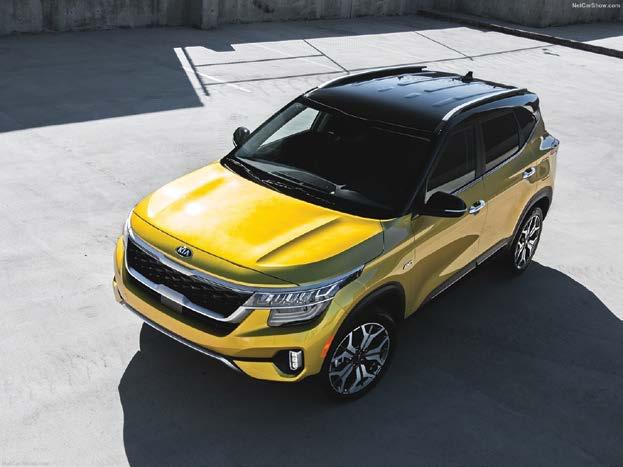













Genuine Kia Parts* are specifically manufactured from original engineering specs to ensure the same exceptional quality, performance and safety as when you first


Gerald Kia of Matteson Matteson (708) 720-8972 (708) 720-0657 Fax
M, W, F 6am-5pm Tu, Th 6am-7pm; Sat 8am-2pm mattesonkiaparts@geraldauto.com www.geraldkiamatteson.com
Raymond Kia Antioch (847) 395-3600 (847) 838-7997 Fax
M-F 7am-6pm; Sat 7am-2pm kweber@raymondchevrolet.com
Shottenkirk Kia West Burlington (866) 296-0625 (888) 945-3729 Fax
M-F 7:30am-5pm
Midwest Kia Wichita (316) 652-2960 (316) 652-2992 Fax
M-F 8am-6pm; Sat 8am-2pm jjensen@midwestkia.com
Kia of Lansing Lansing (517) 393-5700 (517) 393-6767 Fax
M-F 7:30am-6pm mattr@lansingisyoung.com www.kiaoflansing.com
Seelye Kia of Kalamazoo Kalamazoo (269) 488-0614
M-F 7am-6pm gmeskil@seelye.com
Lupient Kia of Brooklyn Park
Brooklyn Park (800) 569-5735 (763) 424-9437 (763) 424-4631 Fax M-F 7am-6pm
Lou Fusz Kia St. Louis (877) 221-4151 (314) 595-4942 Fax
M, W, F 7am-8pm; Tu, Th 7am-6pm Sat 7:30am-4pm fuszkiaparts@fusz.com www.kia.fusz.com
Napleton’s
Mid Rivers Kia St. Peters (888) 816-9729 (636) 926-0683 Fax
M-F 7am-6pm; Sat 7am-3pm bprinster@napleton.com pschnare@napleton.com www.midriverskia.com
Suntrup Kia
St. Louis (800) 727-8496 (314) 815-3060 Fax M-F 7am-5pm www.suntrupkiasouth.com
Kia of Fargo Fargo (800) 728-7601 (701) 282-5924 Fax M-F 7am-5:30pm; Sat 8am-5pm
By Abby Andrews Autobody News
“The era of the single store generalist body shop is coming to an end. How does that sentence make you feel? Angry? Scared? Defensive? Spoiler alert — I think it should excite you.”
Cole Strandberg, host of The Collision Vision podcast, driven by Autobody News, recently opened a new series, “End of the Single Store Generalist Shop Era,” by presenting an overview on why he thinks this is the case – and what single shop operators can do about it, “to not only survive in the future of collision repair, but to thrive,” he said.
In the coming weeks, the podcast will feature guests whose shops have specialized, scaled or sold in response to this very issue.
Strandberg grew up in the collision repair industry. In the late 1980s, his parents started a company supplying equipment to repairers. After college and a foray into investment banking, Strandberg joined the family business, and remained with it after it was acquired by a private equity group.
About three years ago, he joined
FOCUS Investment Banking, where he works on mergers and acquisitions and raising capital within the collision repair industry.
“It’s an industry I love,” Strandberg said. “I’ve grown up around it, but it’s really been over the past maybe five or six years that I’ve realized my passion for the industry.”
At the 2023 SEMA Show,
audience at the end, Mike Anderson of Collision Advice asked why the panel had only talked about how single shop operators can sell to a consolidator, but didn’t touch on how to grow instead by using some of their same tactics.
“I realized he was 100% right,” Strandberg said. “We have some incredible high growth, massive organizations in our industry, but we also have some smaller, fast-growing ones as well. I think to educate on some of the tactics that the big national consolidators use is smart and timely.”

There are several reasons Strandberg thinks single shops that repair all vehicles are going by the wayside – insurance challenges, increasing vehicle complexity
opportunities…It might be a real shortterm hindrance, but the opportunities and the doors that these challenges open are going to make for a very exciting future.”
After hosting The Collision Vision podcast for two years, Strandberg said his conversations with industry leaders have led him to believe there are three viable paths forward for single shop generalists – specializing, scaling or selling.
Specializing
“We’ve heard it time and time again from operators that the time in this industry has come where we are not going to be all things to all people,” Strandberg said.
Shop operators can consider their options – concentrating on exotic or luxury cars; domestic, European or Asian makes; EVs; specific brands; or trucks.
“What do you guys get the most of? What is your team really good at
Strandberg participated in a panel discussion on consolidation with several other industry members.
During a Q&A session with the





Specializing helps a shop build a reputation for excellence in its niche, and bring more services in-house, many of which are highly profitable.
It also leads to “massive efficiencies” in a shop, particularly in parts procurement, marketing and repair procedures.
It all contributes to perhaps the second-biggest benefit of specialization behind ensuring safe and proper repairs – increased profitability.
Strandberg said on average, the shops he sees in his work with FOCUS that have specialized are 50% to 100% more profitable than their generalist counterparts.
One downside to specialization is that it can limit a shop’s potential buyers if the owner decides to eventually sell, but Strandberg said that’s changing.
“Now we’re seeing groups who focus on specialized body shops popping up and growing left and right,” he said. “You are not limiting yourself by specializing by increasing profitability.”
The collision repair industry has always been David vs. Goliath, Strandberg said, but specializing helps the Davids beat the Goliaths by allowing them to fight the battle in their own way.
Strandberg said the upcoming episode on specialization will take a
closer look at how to choose one for your shop by looking at local market needs and your shop’s skillsets.
The concept of scaling is misunderstood by a lot of smaller operators in the collision repair industry, Strandberg said, rooted in the simple math equation of 1+1=2.
“The magic comes in something called multiple arbitrage, where one plus one equals three or more,” he said.
As an example, he offered a hypothetical single shop doing $3 million in sales at a 10% EBITDA (earnings before interest, taxes, depreciation and amortization) margin. A national consolidator offers to purchase the shop for $1.5 million — 50% of revenue, or five times EBITDA margin.
For the example, Strandberg used The Boyd Group, which owns Gerber Collision & Glass, as it’s a publicly traded company. In the most recent results from 2023, Gerber’s sales were $2.9 billion, and its adjusted EBITDA was $368.2 million for a 12.5% EBITDA margin.
“So just right there, above the average for a generalist, from profitability, you can see how they’ve been able to get some efficiencies via scale,” Strandberg said.

Based on the same 2023 numbers, The Boyd Group is worth $5.6 billion.
“It’s a big company,” Strandberg said. “That valuation, depending on how you look at it, boils down to 193% of sales, or about 15 times EBITDA.
If The Boyd Group were to purchase that hypothetical shop, “in theory, as soon as that acquisition becomes a part of Gerber, they have gone from a 50% of revenue valuation to a 193% of revenue valuation, about four times, or from a five times EBITDA multiple to a 15 times EBITDA multiple, about three times,” Strandberg said.
“So as soon as this acquisition got implemented, not only is it adding that revenue in that EBITDA, the value of that acquisition has tripled to quadrupled,” he said.
That example is a “quick and dirty” explanation of multiple arbitrage.
“[Consolidators] realize that one plus one equals three, four, five, six, 10, whatever it is, but it doesn’t equal two. That’s the value of scale,” Strandberg said.
Multiple arbitrage is just as impactful on a small business that scales.
Strandberg said scaling offers other benefits that make scaled companies worth more than smaller ones.
“A positive side effect is you work yourself out of a job with scale,” he said. “It necessitates working more
on the business rather than in the business, strategically plugging in layers of management, allowing you kind of, weirdly enough, a little more freedom with your time as you grow.”
Scaling also offers the ability to hire top talent, Strandberg said, as there is a “sweet spot” in the hiring bell curve for shops in between single store generalists and national consolidators. First, semi-scaled businesses can pay market rate to get good people. “They’re going to be able to be competitive with the bigger players in their salary and in their benefits,” Strandberg said.
Second, they can build a work culture that attracts technicians who don’t want to be perceived as “just a number,” or that they’re under pressure to simply hit production goals, whether or not the repair is done correctly. Other benefits of scaling include increased acquisition interest when the time does come to exit, or opening up the business to private equity opportunities once it hits a certain size. There are five options to fund scaling a collision repair business –writing a check, which is rare outside of national consolidators; taking on investors or partnering with private equity firms; taking out a traditional bank loan; seller financing; and using
OHIO
Byers Volkswagen Columbus 614-552-5490
Fax: 269-342-0065
M-F 8am-5:30pm www.maplehillauto.com MINNESOTA
Schmelz Countryside Volkswagen St Paul 651-484-0424
Direct 866-869-0481
M-F 8am-6pm skokaisel@saabvw.com
M-F 7:30am-6pm; Sat 8am-12pm wholesaleparts@byersauto.com
Ken Ganley VW North Olmsted North Olmsted 440-734-1076
M 7:30am-7pm T-F 7:30am-6pm Sat 8am-4pm jim.j@ganleywestside.com www.kenganleyvwnortholmsted.com
By Paul Hughes Autobody News
A body shop is on TV again. Could say collision centers are ready for their close-up, but the industry hasn’t hurt for Hollywood attention. Shops have figured in film and television from “Corvette Summer” to “The Sopranos.” A collision center in Maryland once sought a reality TV gig.
Clint Eastwood’s “Juror #2” never shows a shop, but its plot discusses them, a hit-and-run, and vehicle damage. A current Modelo beer commercial shows three Latinas working on a lowrider’s engine, upholstery and paint. A California body shop recently for sale was once in an Adam Sandler film.
Now a custom and restoration operation is the setting for an ABC and Hulu sitcom, “Shifting Gears.”

The show airs Wednesdays at 8 p.m. on the broadcaster, early Thursday mornings on the streamer, produced by 20th Television. Walt Disney Co. owns 20th Television, ABC and Hulu.
A description, from the show’s press info: “‘Shifting Gears’ stars Tim Allen as Matt, the stubborn, widowed owner of a classic car restoration shop. When Matt’s estranged daughter (Kat Dennings) and her kids move into his house, the real restoration begins.”
It’s Tim Allen playing Tim Allen, at least as we’ve come to know him.
Young dad in “Home Improvement,” middle-aged dad in “Last Man Standing,” now a granddad, and dad of an adult daughter in “Shifting Gears.” And Tim Allen loves classic cars, being widely known for restomod tendencies — co-creating a modern F-100 with McLaren or Tesla-ing a hot rod. His classics are in a SoCal warehouse.
Samples from the throng will be in “Shifting Gears” as shop projects, said production designer Stephan Olson



“He wanted this to reflect him,” Olson
Maple Hill Subaru
Kalamazoo (800) 323-0022
Direct (269) 978-0191 (269) 342-0065 Fax Mon-Fri 8-5:30 www.maplehillauto.com
Luther Bloomington Subaru
Bloomington (800) 451-5078
Direct (952) 887-0600 (952) 881-1787 Fax Mon 6:30-6; Tue-Fri 6:30-9; Sat 8-4 parts@bloomingtonsubaru.com www.bloomingtonsubaru.com
Morrie’s Brooklyn Park Subaru
said.
“There’s a transportation department on the show,” he said, “with four or five cars on set” most of the time. Vehicles are moved around to illustrate a working shop and garaged overnight on the Disney production lot.
“We looked at a lot of shops online” in creating the set, he said, and “matched colors and architectural styles” as the focus settled on Allen’s personal restoration space in the warehouse.
More visuals came from BS Industries, a custom hot rod shop in L.A. Bodie Stroud has built for celebrities, including Allen and Johnny Depp, his website said.
“That was a big influence on us, for how a shop is set up,” Olson said, so “it wouldn’t just be a guy holding a crescent wrench.”
Two others crucial: Brett Gregory, who helps oversee Allen’s fleet, and Kady Fox, one of Allen’s daughters.
Co-Starring Vehicles from Tim Allen’s Car-Stack
Sometimes a completed vehicle will be partly “unrestored” Olson said, and work incorporated into the show.
Easter eggs abound. With one,
Byers Airport Subaru
Columbus (614) 552-5490
Mon-Fri 7:30-6; Sat 8-12 wholesaleparts@byersauto.com
Ken Ganley Subaru North Olmsted North Olmsted (440) 788-7060 jtjoyce@ganleywestside.com Mon-Fri 7:30-6 Sat 8-5



Brooklyn Park (800) 343-6999 (763) 765-1462 (763) 765-1487 Fax Mon-Fri 7-7; Sat 8-5 bpsubaruparts@morries.com www.brooklynparksubaru.com
shop manager Gabriel asked about an inverter and a hot rod, a nod to when Allen turned a 1934 Ford Victoria into an electric vehicle via its Tesla engine and drivetrain.
character, Mike Baxter. That show took place in Denver, CO — Allen’s birthplace — and the truck, which over Matt’s objection got EFI, has an owner mentioned on “Shifting Gears”… in Denver.

Another episode’s elaborate example sparked friction between Matt and Gabriel: rebuild a 1956 Ford F-100’s carburetor or install electronic fuel injection.
That conversation involves the owner, said Joe Messina, owner of a custom shop in Fullerton, CA.
“I’ll paint it pink if the check clears,” he said, “but I’m not in the business of making cars for me.”
But the story doesn’t include that talk.
But the reason mostly works: the truck was “stolen” — swiped in the last episode of “Last Man Standing” three years ago, from Tim Allen’s
Allen’s actual truck, filched from his character on one show, restored by a second Allen wrench-wielder here.
Story layers galore for hardcore car guys.
“An inverter in a hot rod?” asked NorCal custom shop owner Ken Pike, of Gabriel’s earlier comment.
He’s seen it.
Pike’s shop “did the body and paint on a ’33 Roadster replica” in which the owner also put a Tesla drivetrain.
Messina’s electric inversion used a Bugatti chassis and a Tesla battery — until the owner stopped the project.
“We never did get to drive it.”
Dave Payne, a Class A tech with The Dent Co. in Texas and former custom shop owner in Southern California, is a big fan of Tim Allen’s restomods. So much so he once bought a 1996 Impala SS, because Allen has a 1995.
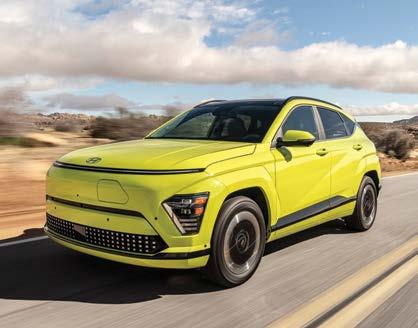


“I follow his car collecting,” Payne said.
When Payne ran 760 Kustomz in Victorville, he tried to get a reality TV show.
“It was active and fun to work there,” Payne said. “I wanted to be one of these shows.”
Pike “didn’t see anything that looked out of place” but “it didn’t really go into much about cars.”
women working in Matt’s shop. “You don’t see a lot of women in the industry.”
Allen early on told Olson “‘the shop’s too clean,’ so we’re working on that subtly,” Olson said, adding, for instance, oil stains to the floor. That’s the body shop image, which is changing. Operators agreed “Shifting Gears” as a TV show will show what people expect, with Tim Allen as Tim Allen: capable and gruff, doing guy stuff.

“They spent such little time on the actual shop,” added Greg Solesbee, a collision center owner in Idaho.
That’s a fair cop: so maybe the show must only suggest a body shop. It’s not about the business, but the people.
Oregon custom shop guy Mike McQuigg liked what he saw — “they got it pretty close” — and noted
Michigan
MAPLE HILL HYUNDAI
Kalamazoo
5622 W. Main St. 800-323-0022
269-978-0191 Direct
269-342-0065 Fax Mon-Fri 8am - 5:30pm www.maplehillauto.com
Ohio
CLASSIC HYUNDAI
Mentor 8460 Tyler Blvd. 440-266-6750
440-266-6763 Fax Mon-Fri 7am - 6pm Sat 7am - 3pm jkash@driveclassic.com www.driveclassichyundai.com
COLUMBIA HYUNDAI
Cincinnati
10981 Montgomery Road 513-489-6333
866-381-9975 Fax Mon-Fri 8am - 5:30pm; Sat 8am-12pm columbiaparts@josephauto.com www.columbiahyundai.com
GANLEY WESTSIDE
HYUNDAI
North Olmsted 25600 Lorain Rd. 440-734-9375
440-686-3426 Fax Mon-Fri 8am - 6pm nicholas.b@ganleywestside.com
TV has tie-ins — 1950’s retro diner Ruby’s was one here — and product placement other than Allen restomods — Lay’s potato chips, say. It also involves something owners don’t want, but TV shows must offer, even if ginned up.
“We’re a no-drama business,” Solesbee said. “We want the highfunctioning groups of a Mike Anderson,” but the show’s shop “is all about drama.”
USA Today declared “Shifting Gears” suitable mainly for Allen fans. There appear to be plenty. Over its first week, it became ABC’s mostwatched series debut in six years, with 17 million viewers.

programs through the federal Small Business Administration (SBA).
Strandberg talked more about private equity and the SBA.
“I can tell you there is tremendous interest in the collision repair industry for private equity buyers in 2024 alone,” Strandberg said. “I spoke with north of 100 private equity groups who are saying, ‘How do we get into collision repair? Are there any platforms available out there?’”
in the past three to four years from “’I’m selling to private equity’ to ‘I’m partnering with private equity,’ where we’re going to do this together,” Strandberg said.
Regarding the SBA, Strandberg said its programs are underused by the collision repair industry, partly due to a lack of awareness of their existence.
The primary business-buying program is the 7(a) loan program.
generalists is selling. Strandberg recommended it for owners who are ready to retire or try something new.
“The good news is there are more buyers out there than ever,” he said.
Minnesota
Maplewood Toyota
MAPLEWOOD
651-490-2648
651-490-2652 Fax
M-Thu 7am-10pm; F 7am-6pm Sat 8am-4pm pwienke@maplewoodtoyota com www�maplewoodtoyota�com

ILLINOIS
Audi Exchange Highland Park
847.432.5880
847.432.5708 Fax audi.parts@audiexchange.com
Audi Columbus Columbus 614.552.5490 M-F 7:30am-6pm Sat 8am-12pm wholesaleparts@byersauto.com THESE DEALERS ARE GENUINE WHOLESALE PARTS SPECIALISTS
Those potential buyers are looking for, in general, a minimum of $2 million of EBITDA margin, which typically translates to more than $10 million in revenue.
“More private equity firms are going to have more interest the bigger you get,” Strandberg added, as platforms that large are low in supply, compared to the demand.
Striking a deal with a private equity investor also frequently offers a “second bite of the apple,” Strandberg said, which is appealing to younger, more aggressive business owners. By putting cash received in the deal back into the company, they “grow using someone else’s money.”
That concept has shifted the conversation about private equity

OHIO
Audi Kalamazoo
Kalamazoo
800.323.0022 Toll Free
269.978.0191 Direct 269.342.0065 Fax M-F 8am-5:30pm www.maplehillauto.com
“It essentially gives you, an American citizen, up to a $5 million credit limit to go out and buy a company,” Strandberg said. “This is an amazing tool. It’s got strings attached. It does require a personal guarantee, so if you’re going in, you’re putting your skin on the line.”
The loan is government-backed, which means lower than typical financing rates and minimal down payment requirements.
“This is designed to promote small business ownership and growth,” Strandberg said of the program. “I think more body shop owners should pursue the SBA route as they look at going maybe from one to two, or two to three [shops], or anywhere in that range.”
Strandberg called it an “amazing tool short of partnering with a private equity group or giving up equity.”
The final strategy for single shop

Potential buyers include national consolidators, many of which have big growth targets and matching budgets for acquisitions; regional consolidators, which often have private equity backers; and private equity groups themselves.
In 2025, Strandberg predicted, valuations on collision repair businesses will remain steady at smaller levels and continue a trend of slightly ticking up at larger levels.
“It’s going to be some real fights for some premium assets in the space,” he said.
Strandberg wrapped up his overview by reminding listeners to tune in to the next three episodes for deeper dives on specializing, scaling and selling as a single shop generalist.
“The only thing you can’t do, in my opinion, is nothing,” he said.
“For as negative as maybe this conversation started, I’ll end on a real positive. And it’s something that I believe, and I hope you believe as well,” Strandberg said. “There has never been a better time to be a business owner in the collision repair space.”













Illinois
Piehl Motors
PRINCETON
800-845-8964
815-875-4411
815-875-4293 Fax
M-F 7:30 am - 5:30 pm Sat 7:30 am - 12 pm p.lenhausen@piehlmotors.com
Indiana
Schepel Buick GMC
MERRILLVILLE
800-588-7757
219-769-7757
219-755-0339 Fax
M-F 7:30 am - 5 pm parts@schepel.com
Iowa
Shottenkirk Automotive
FORT MADISON
877-310-0513
888-945-3729 Fax
M-F 7:30 am - 5 pm gmparts@shottenkirk.com
Michigan
Ed Rinke Chevrolet Buick GMC CENTER LINE
586-497-4100
586-754-5030 Fax
M, Th 8 am - 9 pm T, W, F 8 am - 6 pm
LaFontaine Buick GMC Cadillac HIGHLAND
877-552-2580
734-793-6000
734-793-1101 /1102 Fax
M-F 7 am - 6 pm Sat 8 am - 2 pm kmason@lafontaine.com
Minnesota Mills Parts Center WILLMAR
800-247-1158
866-235-6700 Fax M-F 8 am - 5:30 pm
Missouri
Bob McCosh
573-449-4103 573-441-5632 Fax M-F 7 am - 6 pm Sat 7 am - 3 pm gmparts@bmcmail.com
Rydell
701-335-2556 24 Hr Fax M-F 7am - 6 pm parts@rydellcars.com www.rydellcars.com
Ohio
#1 Cochran Chevy Buick GMC
YOUNGSTOWN
800-476-0760
330-726-2297
330-726-0709 Fax
Mon-Thu 7am-6pm Fri 7am-5:30pm Sat 7am-3pm matt.fullerton@cochran.com
Jake Sweeney Chevrolet
SPRINGDALE
800-582-5253
513-782-2829
513-782-2846 Fax
M-F 7:30 am – 6 pm Sat 8 am – 2 pm cscott@jakesweeney.com www.jakesweeneychevy.com
Joseph Chevrolet CINCINNATI
800-752-1423
513-741-6735
513-741-3814 Fax
M-F 7:30 am – 5:30 pm Sat 7:30 am – Noon josephgmparts@yahoo.com
8 am - 6 pm Sat 8 am - 3pm Wisconsin
24-HR Fax



920-468-3658 920-468-3673 Fax M-F 7 am - 7 pm Sat 7 am - 2 pm parts@gandrud.com

Co-President & Publisher
Nathan Gregory
Co-President & Publisher
Paul Stepanek
Editor Abby Andrews
Contributing Writers
Mike Anderson, Brian Bradley, Elizabeth Crumbly, Paul Hughes
Stacey Phillips Ronak, Leona Scott Ben Shimkus, Cole Strandberg John Yoswick
Advertising Sales
Norman Morano, Steve Sklenar, Paul Ropski
Office & Media Manager
Kelly Cashman
Director of Digital
Bryan Malinski
Design Director
Vicki Sitarz
Art Director
Rodolfo Garcia
Accounting & HR Manager
Heather Priddy
Content Manager
Randi Scholtes
Serving Illinois, Iowa, Indiana, Kansas, Kentucky, Michigan, Minnesota, Missouri, Nebraska, North Dakota, Ohio, South Dakota, Wisconsin and adjacent metro areas. Autobody News is a monthly publication for the autobody industry. Permission to reproduce in any form the material published in Autobody News must be obtained in writing from the publisher.
©2025 Autobody News, LLC.
Autobody News P.O. Box 1516 Carlsbad, CA 92018 (800) 699-8251 (760) 603-3229 Fax editor@autobodynews.com

ILLINOIS
GERALD NISSAN
Matteson
708-720-2185 (708) 720-3709 Fax
M-F 8-5:30, Sat. 8-3 mattesonnissanparts@geraldauto.com www.geraldnissanmatteson.com
MINNESOTA
EDEN PRAIRIE NISSAN
Eden Prairie 952-567-2150 (952) 567-2197 Fax M-F 6:30-7 parts@edenprairienissan.com www.edenprairienissan.com


GANDRUD NISSAN
Green Bay
800-242-2844
(920) 785-5868 (920) 884-0882 Fax M-F 7-7, Sat. 7-2 nissanparts@gandrud.com





•
•



Illinois
Laurel BMW of Westmont Westmont 630-230-2890 Direct Wholesale M-F 7am-6pm Sat 8am-3pm www.laurelbmw.com
Iowa
BMW of Des Moines Urbandale 515-446-3660 515-278-2917 Fax M-F 8am-5:30pm Sat 8am-4pm jcarlson@lithia.com www.bmwdesmoines.com
©2024
Missouri
Autohaus BMW St. Louis 888-811-6199 314-880-8428 Fax M-F 7am-6pm brian.fischer@bmwautohaus.com
Ohio
Kelly BMW Columbus 614-471-2277 614-476-2488 Fax M-F 8am-6pm Sat 9am-2pm www.kellybmw.com













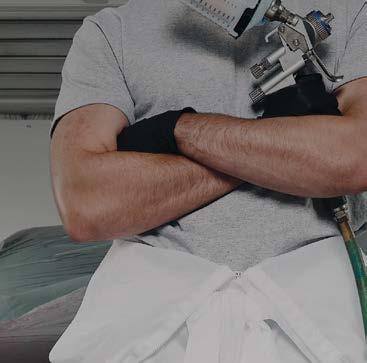




Why do so many shops choose Cromax® XP?
Maybe it’s because they can achieve a premium finish in as few as two coats. Or that it’s easy to mix, match, and apply. It could also be having access to the most innovative digital color match tools. But we’d like to think it’s all of it.
See what sets Cromax® XP apart from the competition. axalta.us/xp

